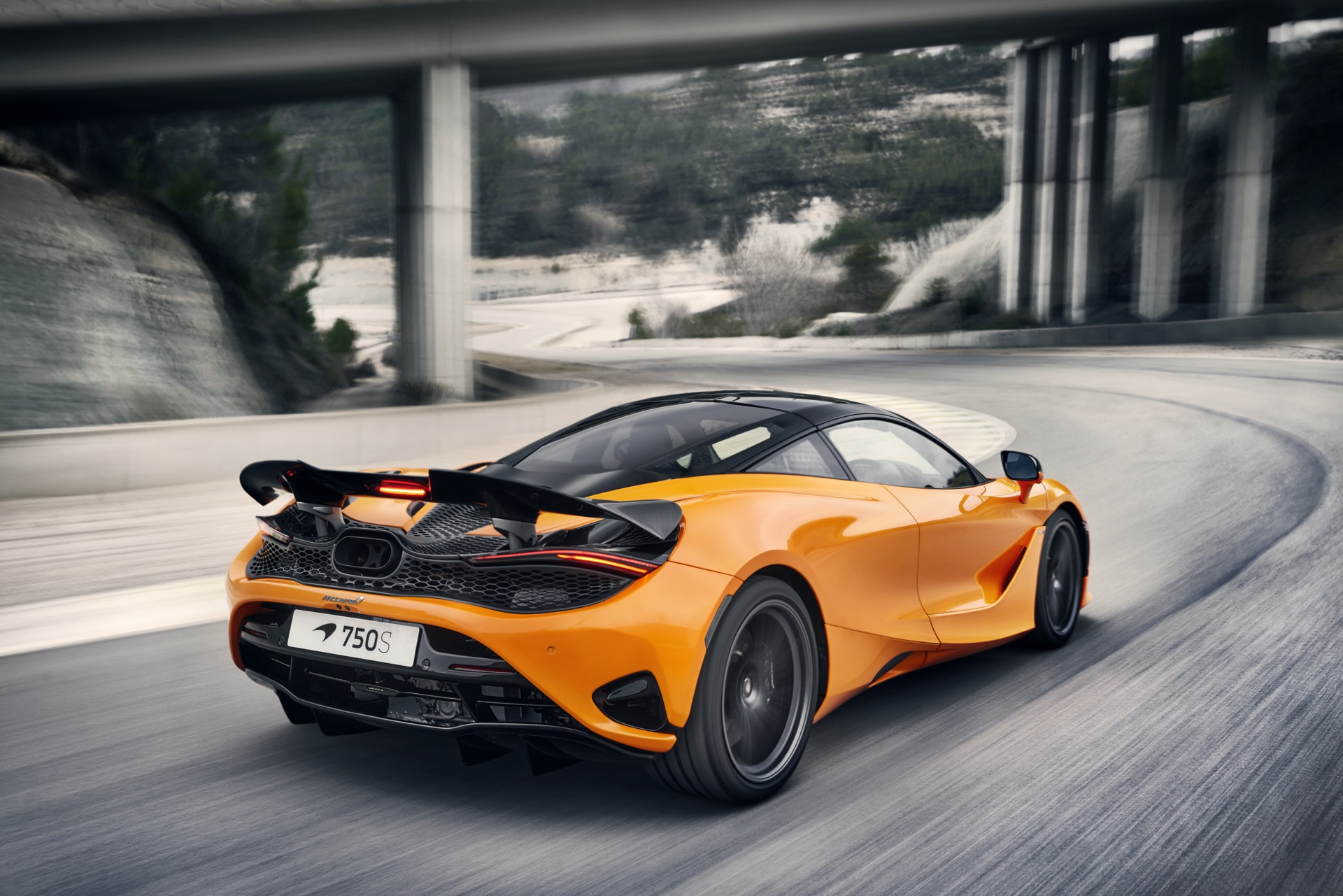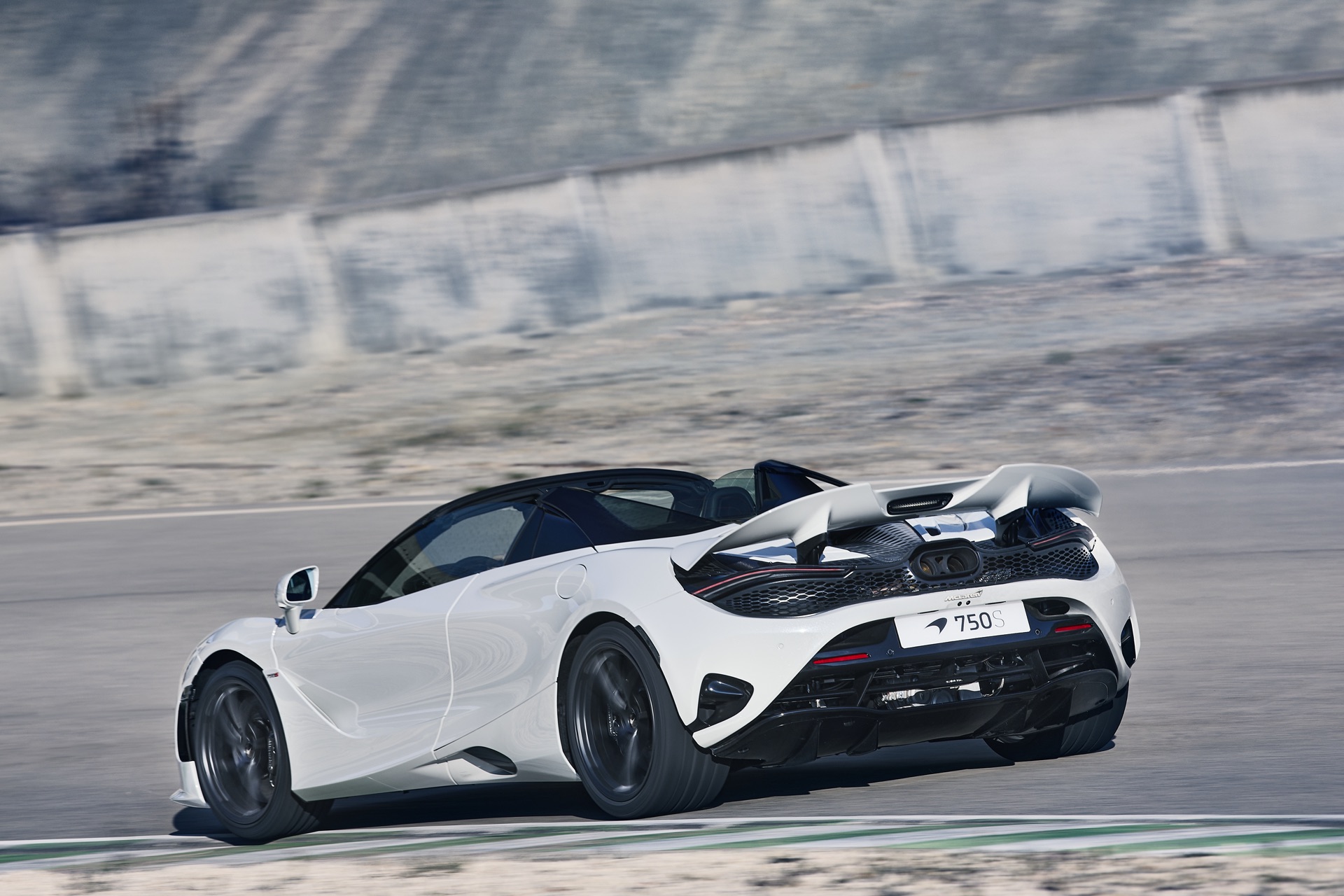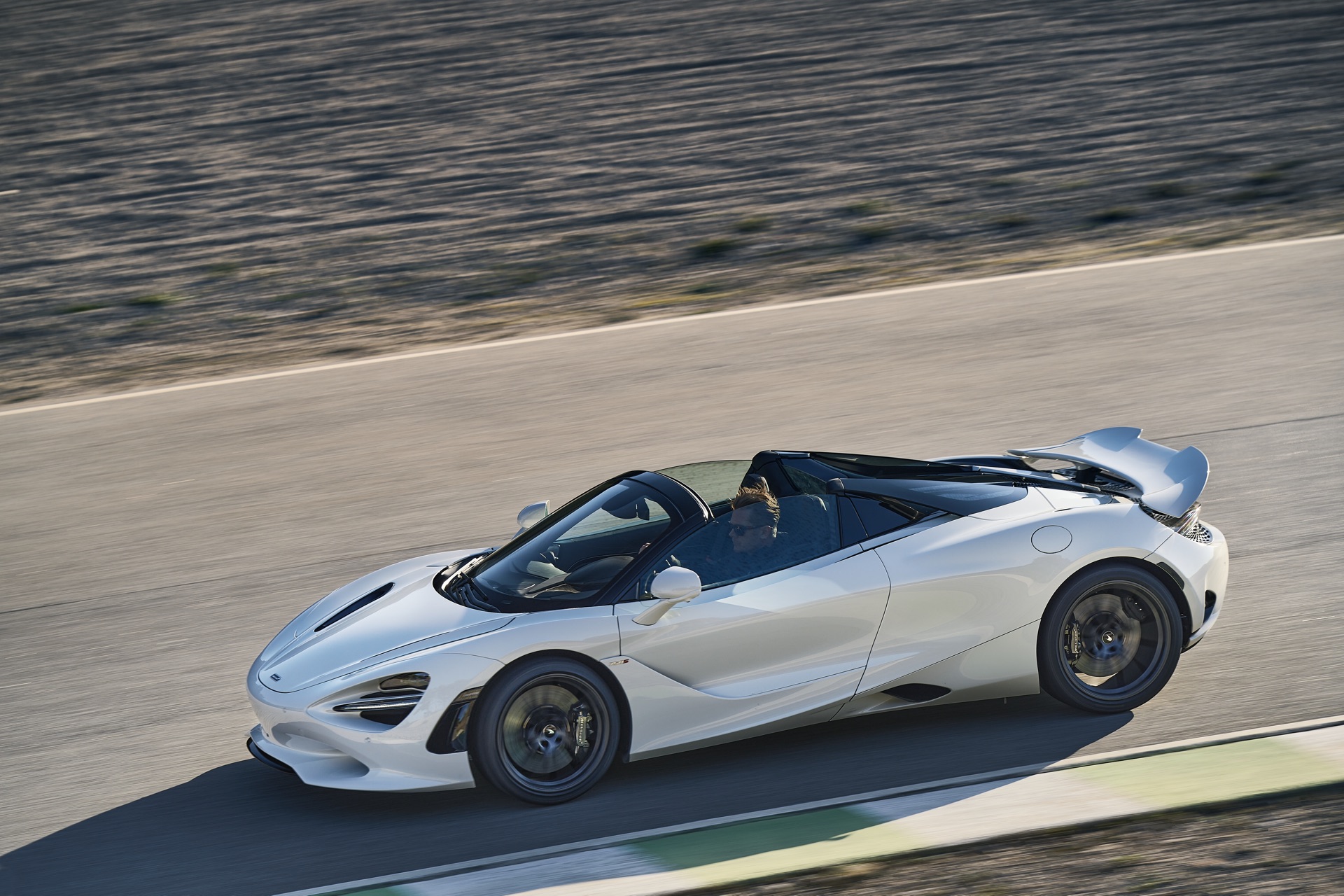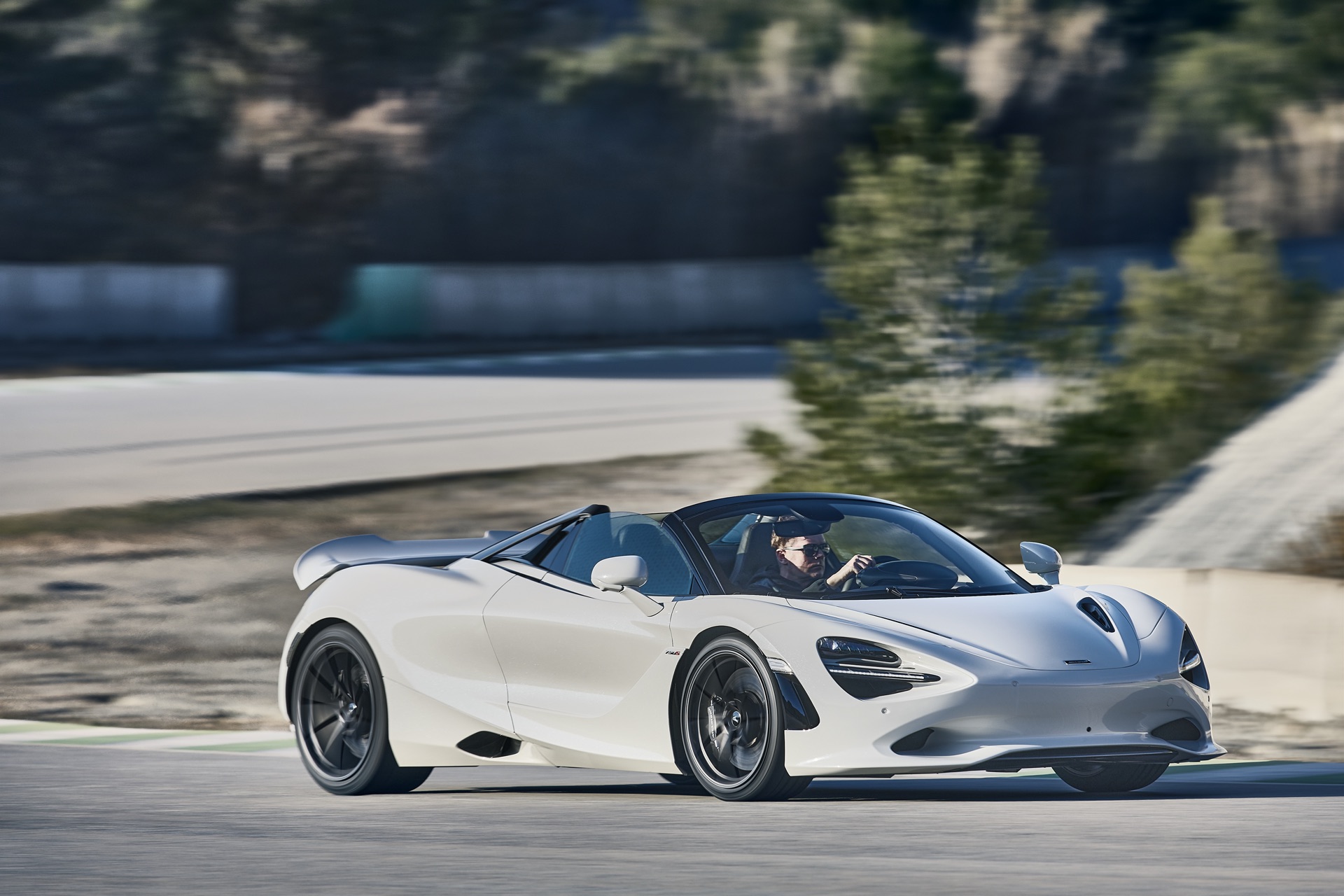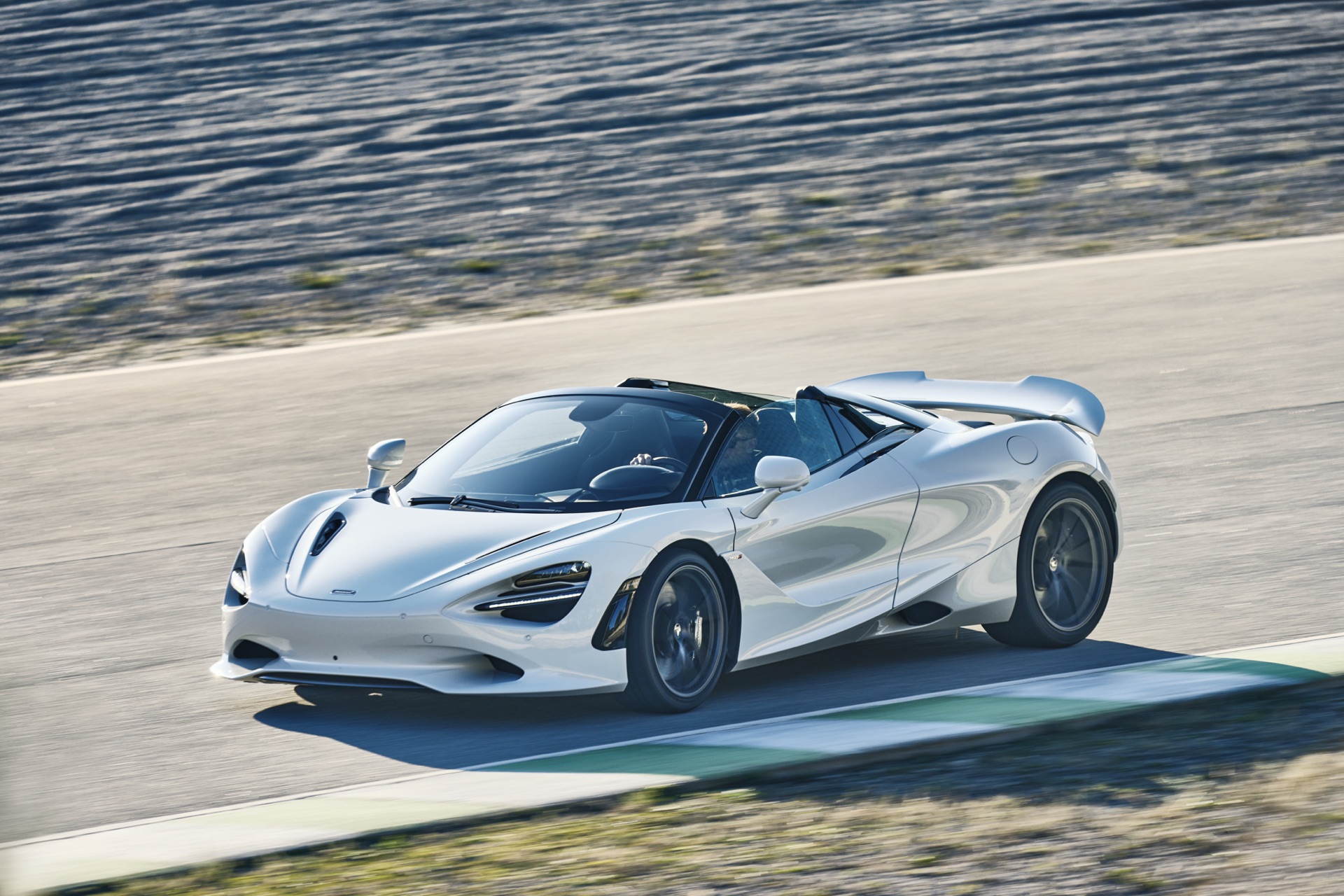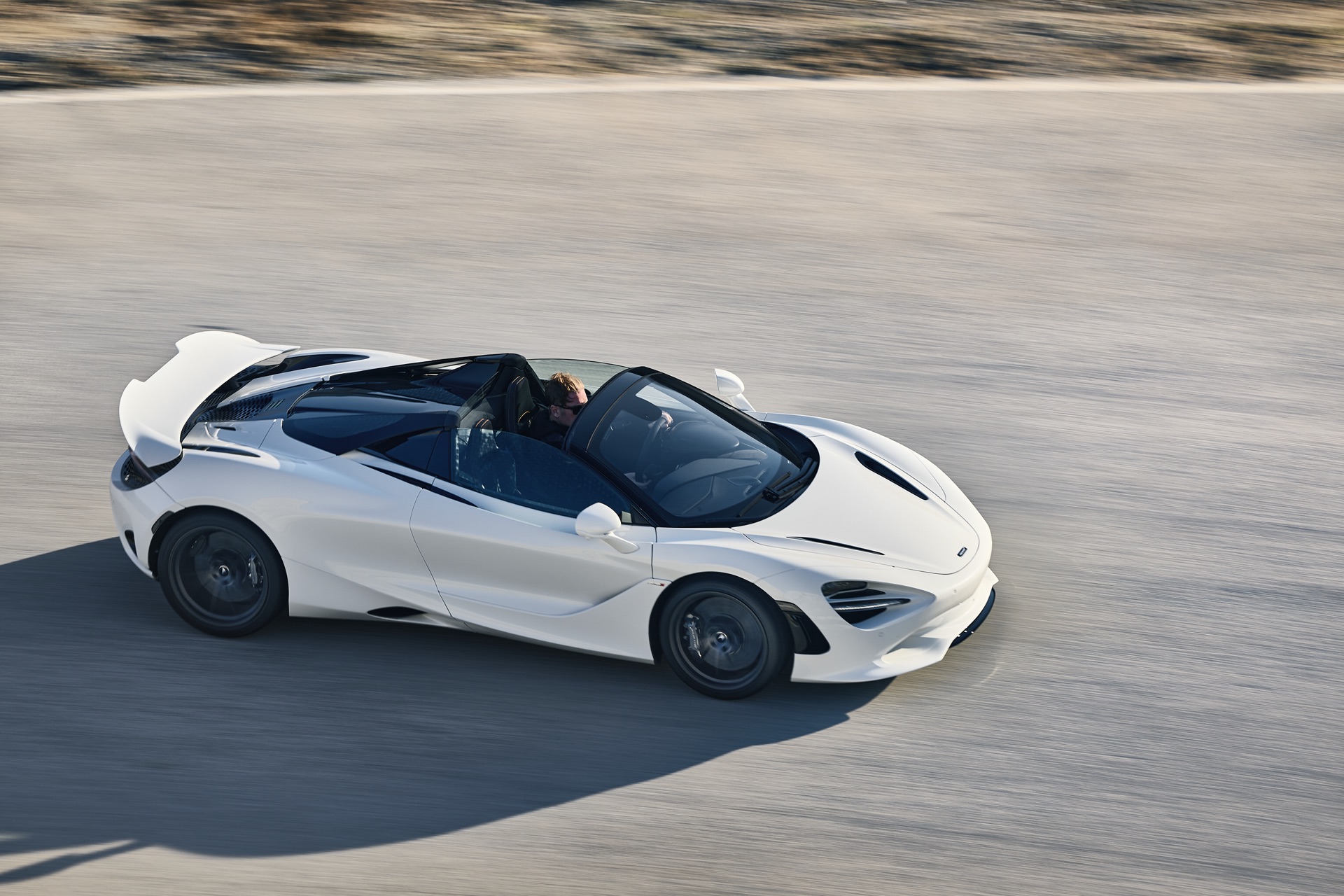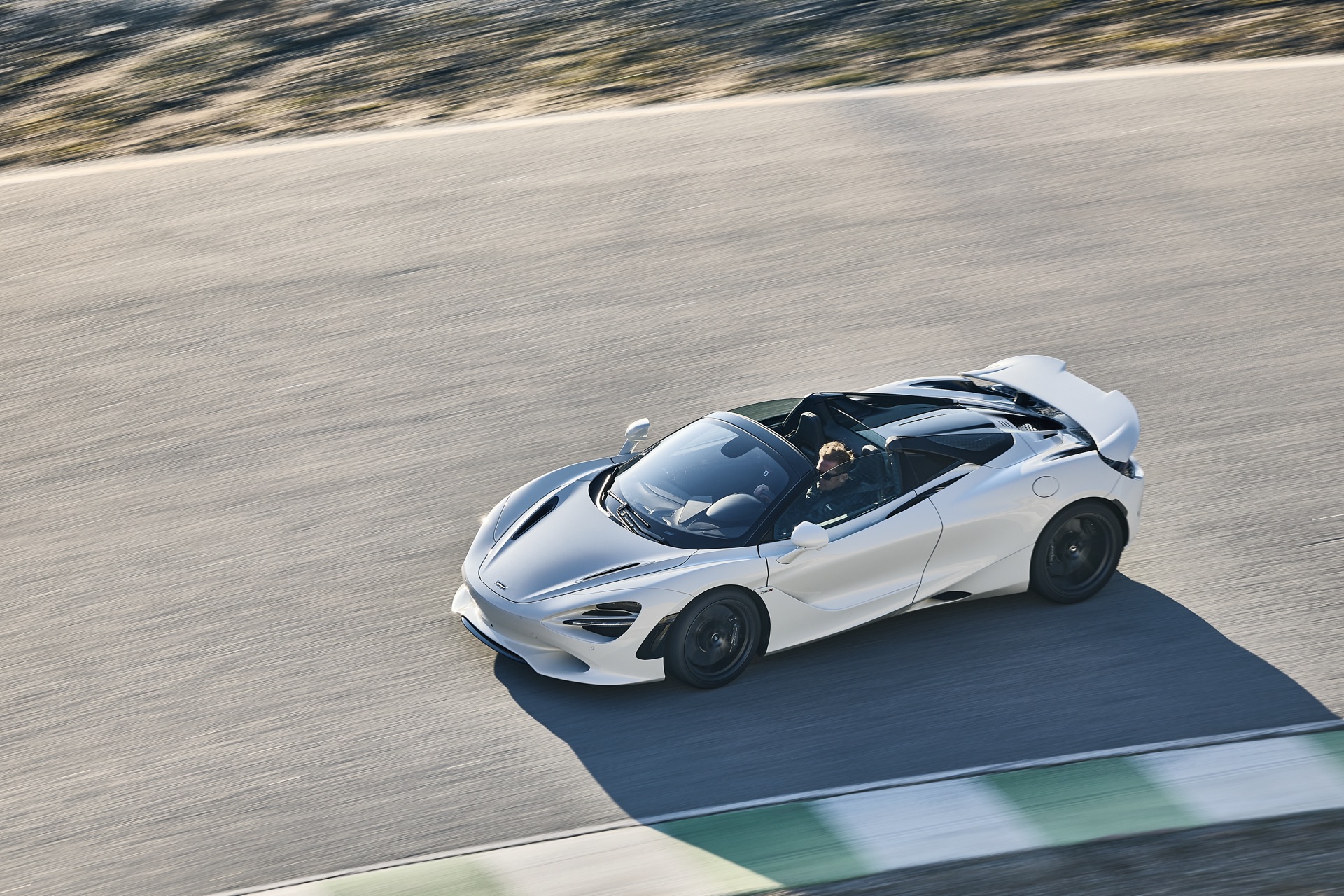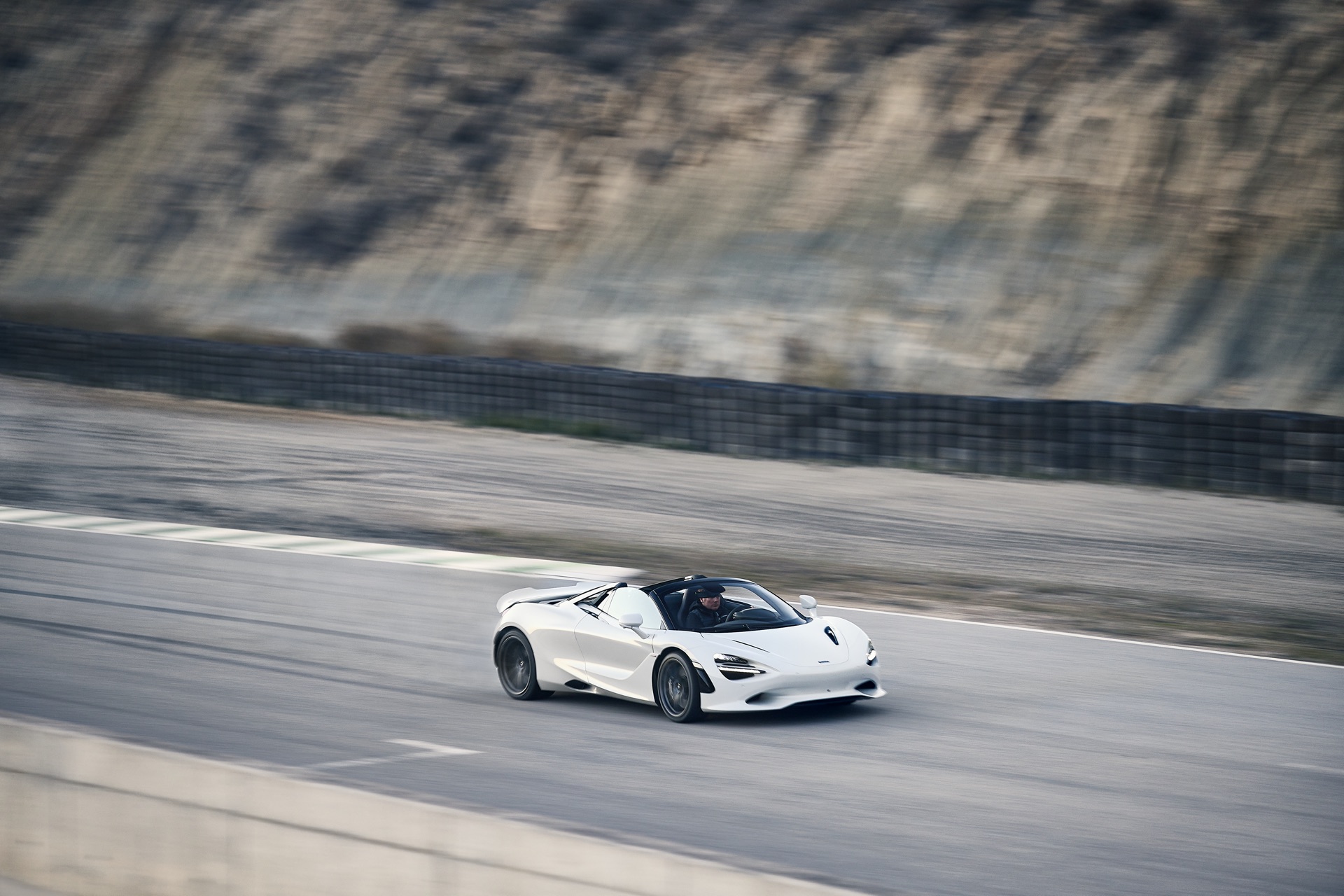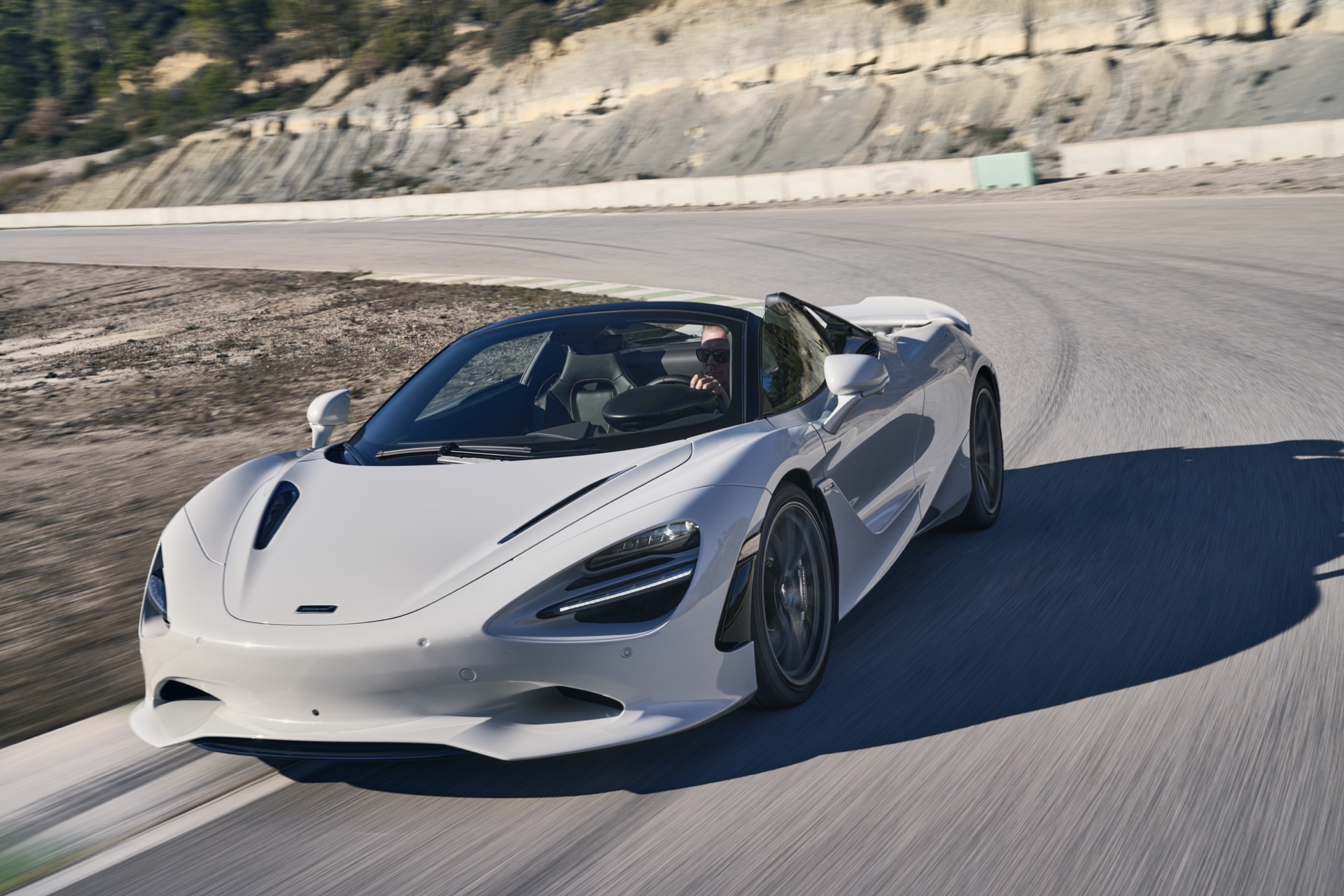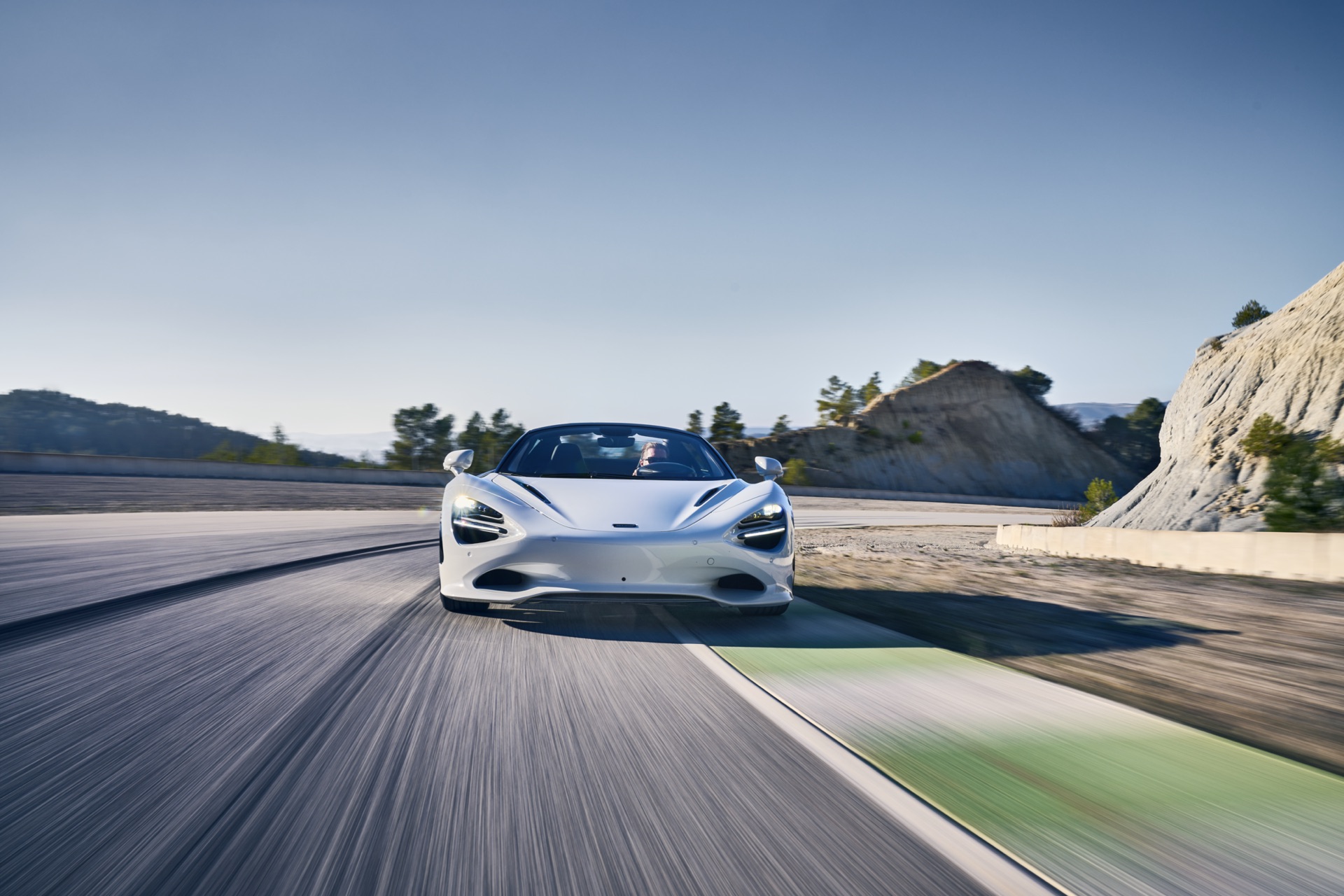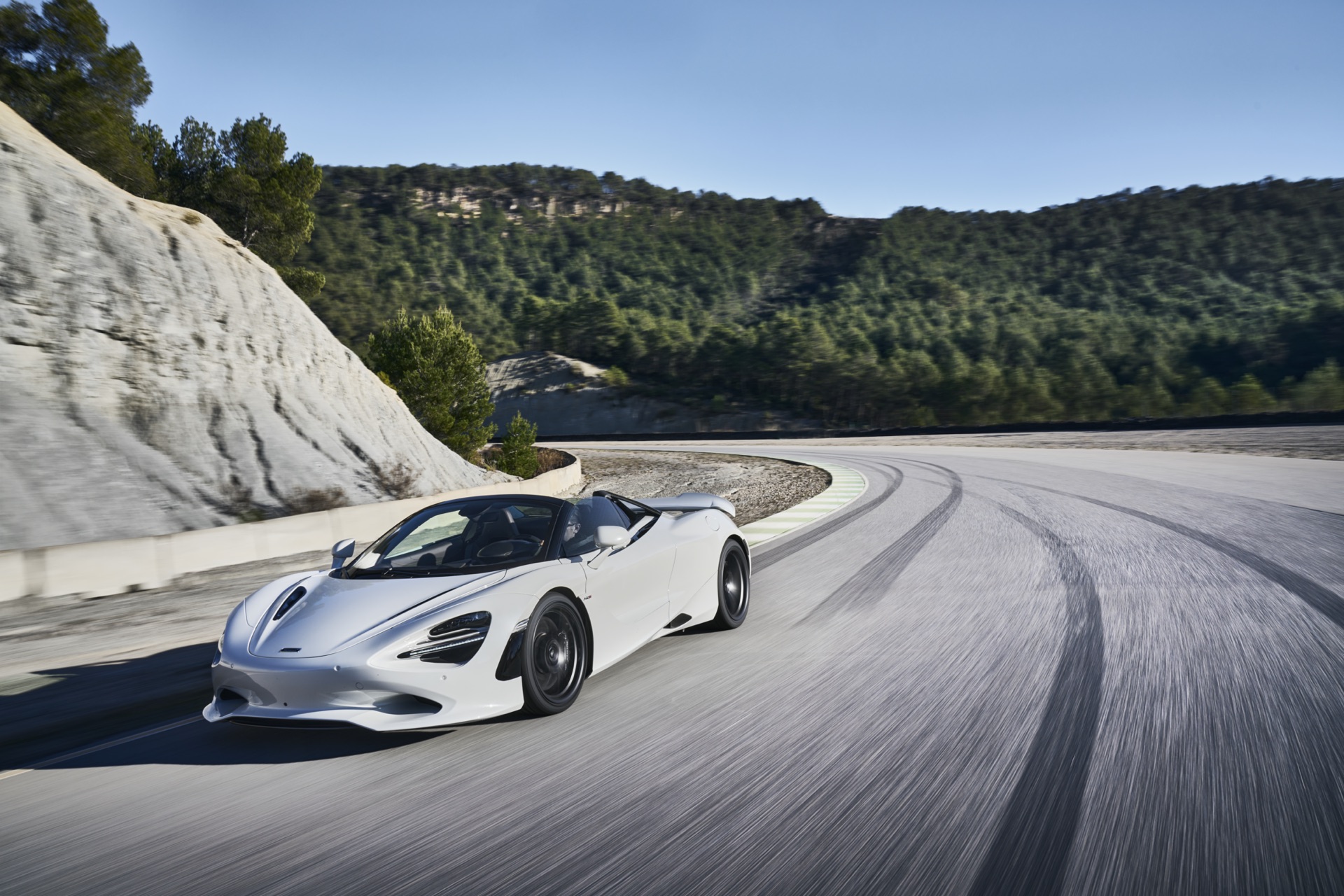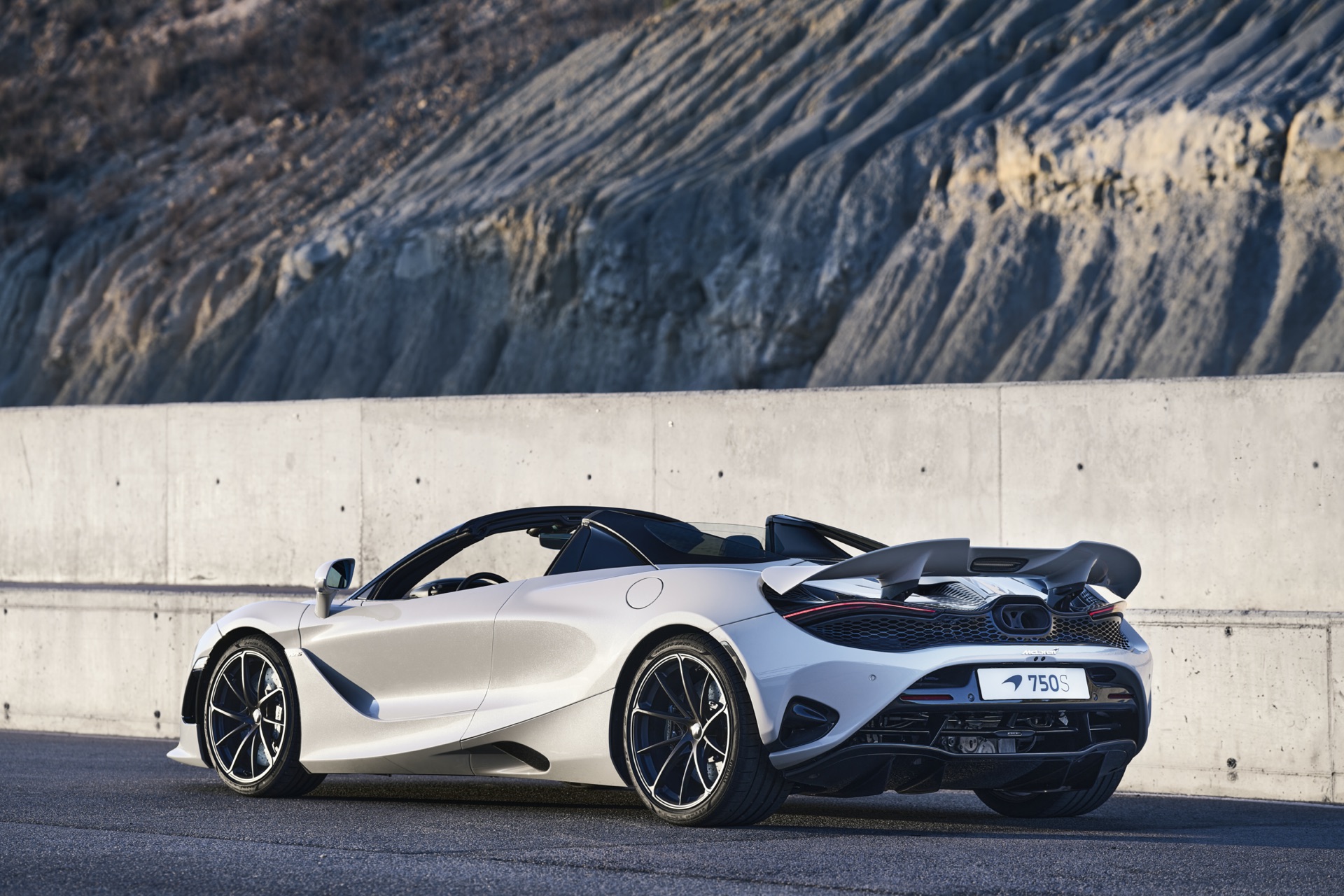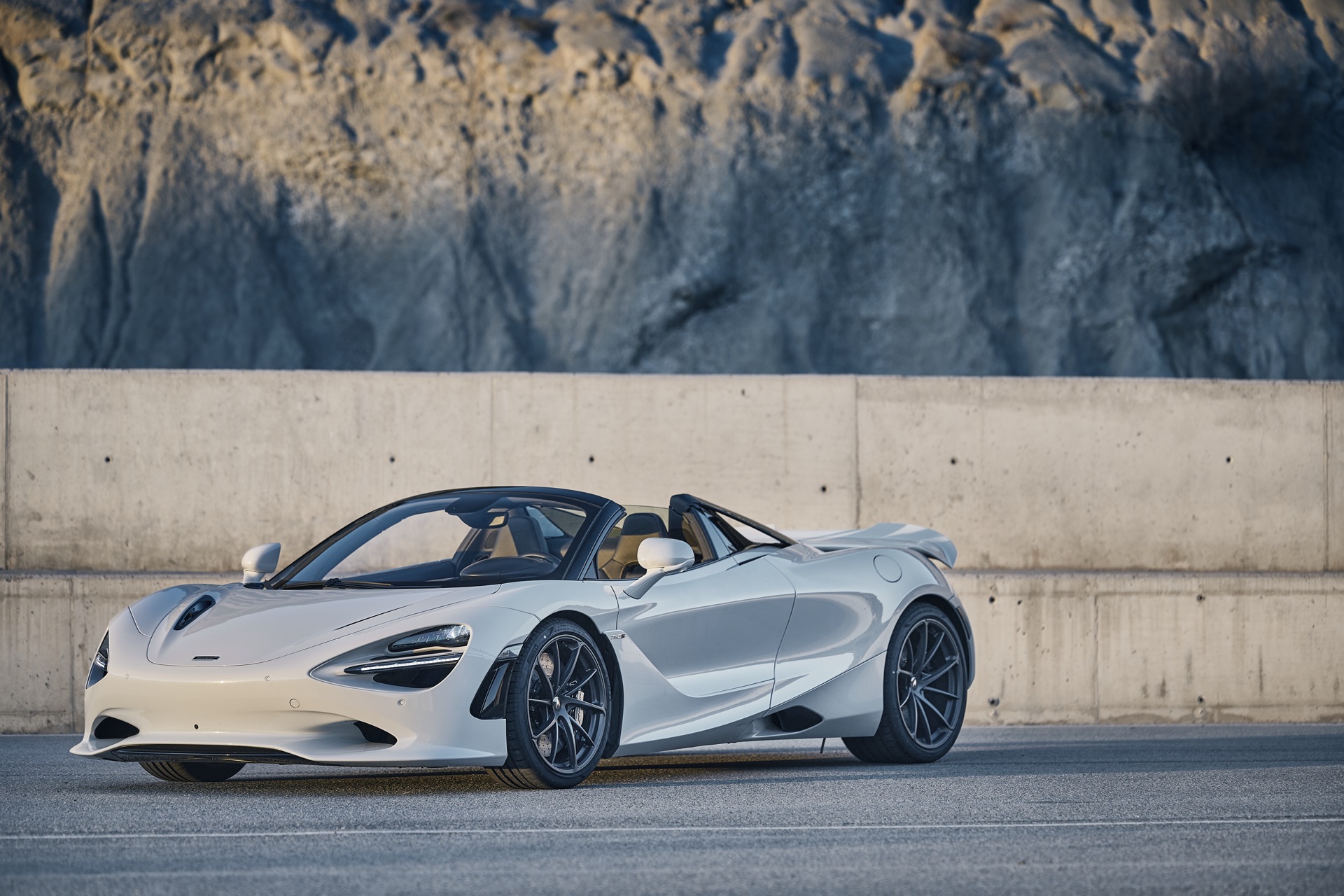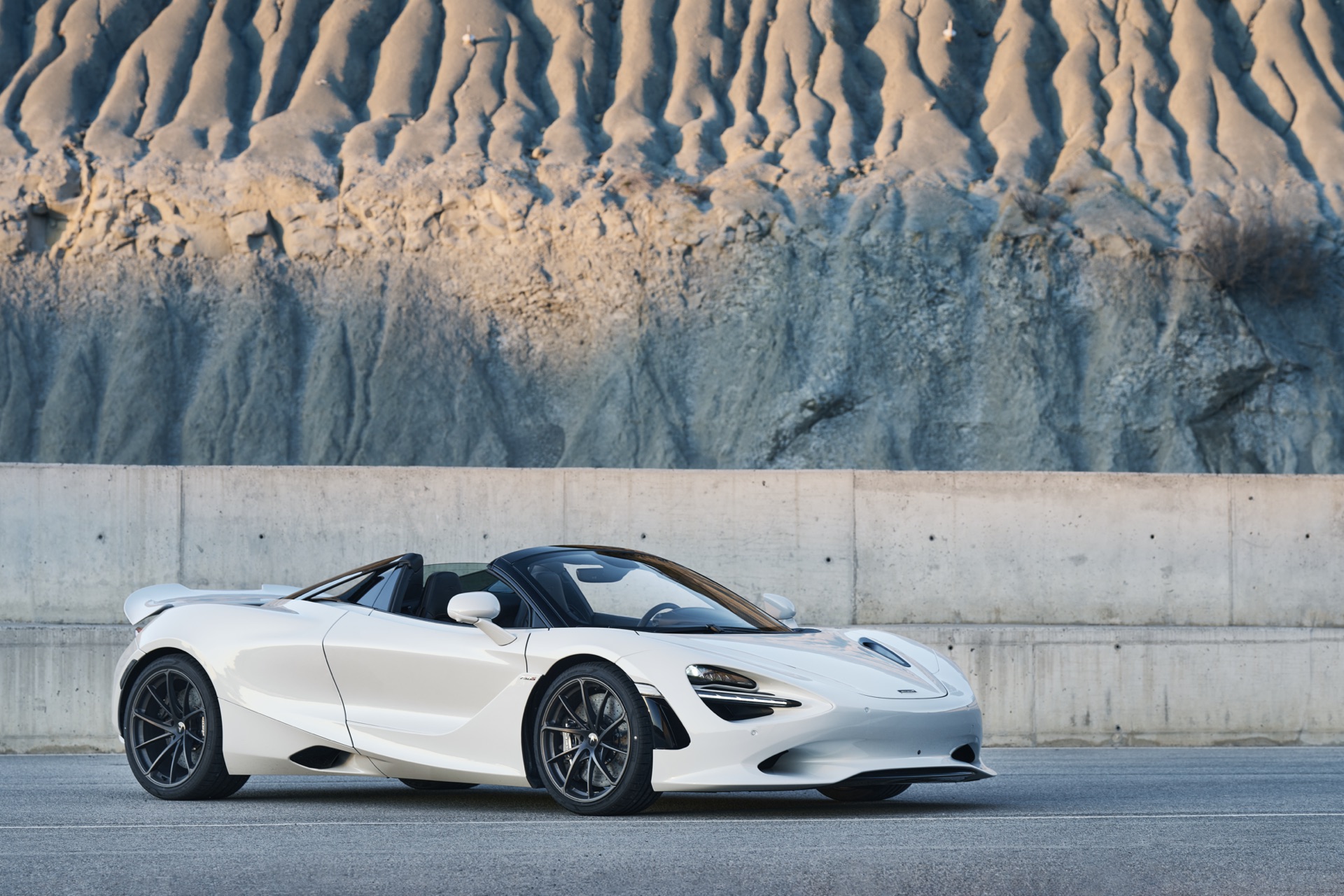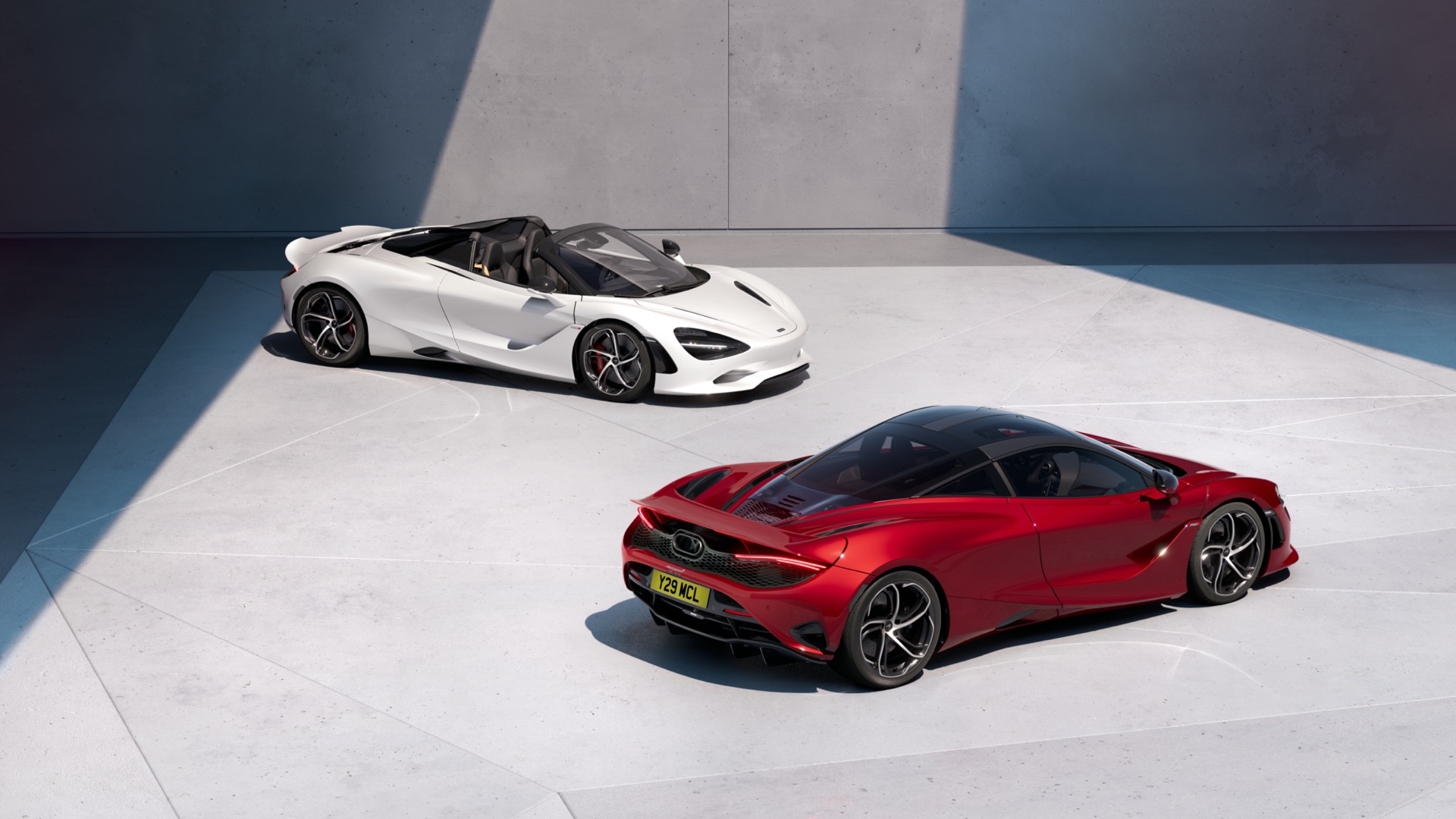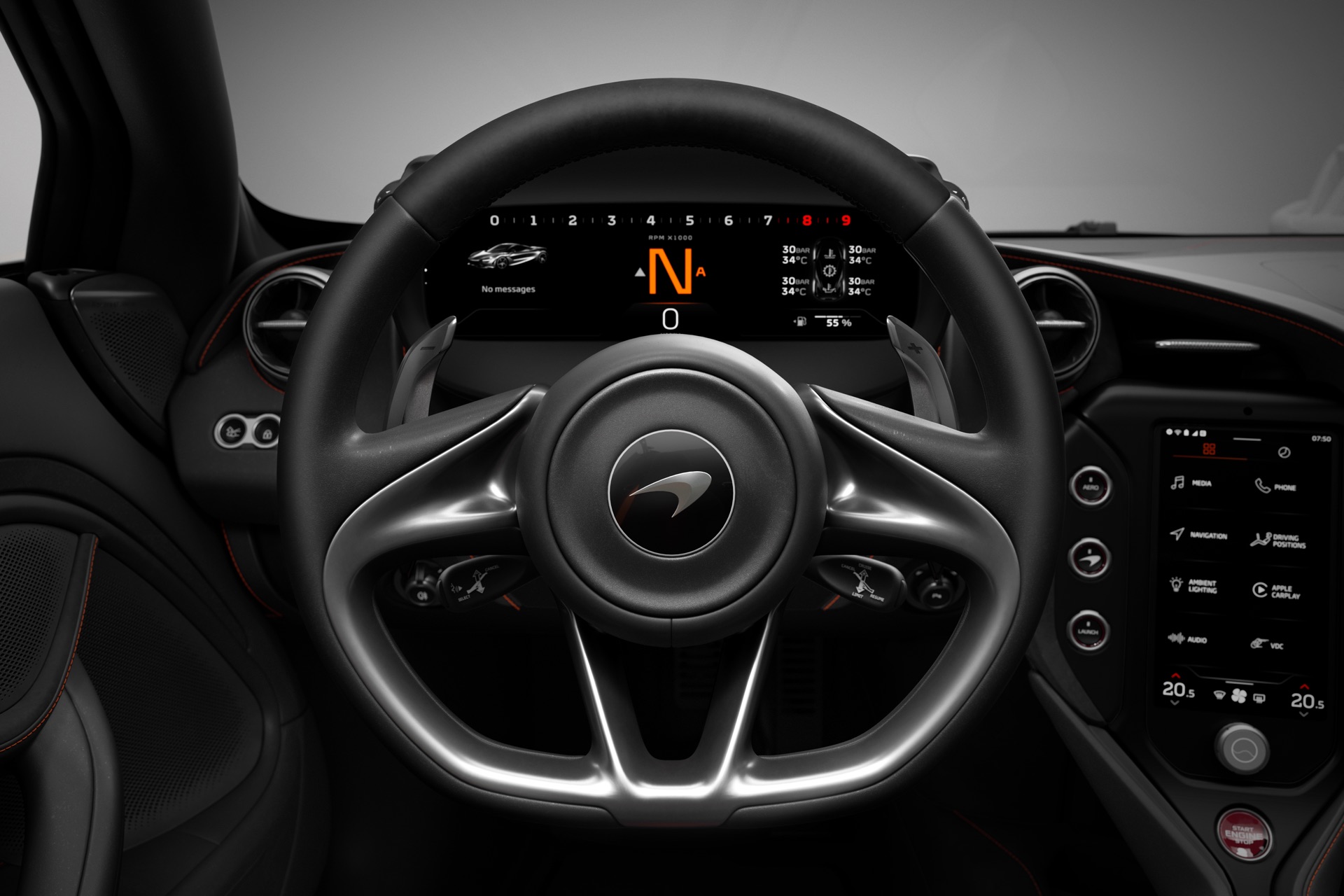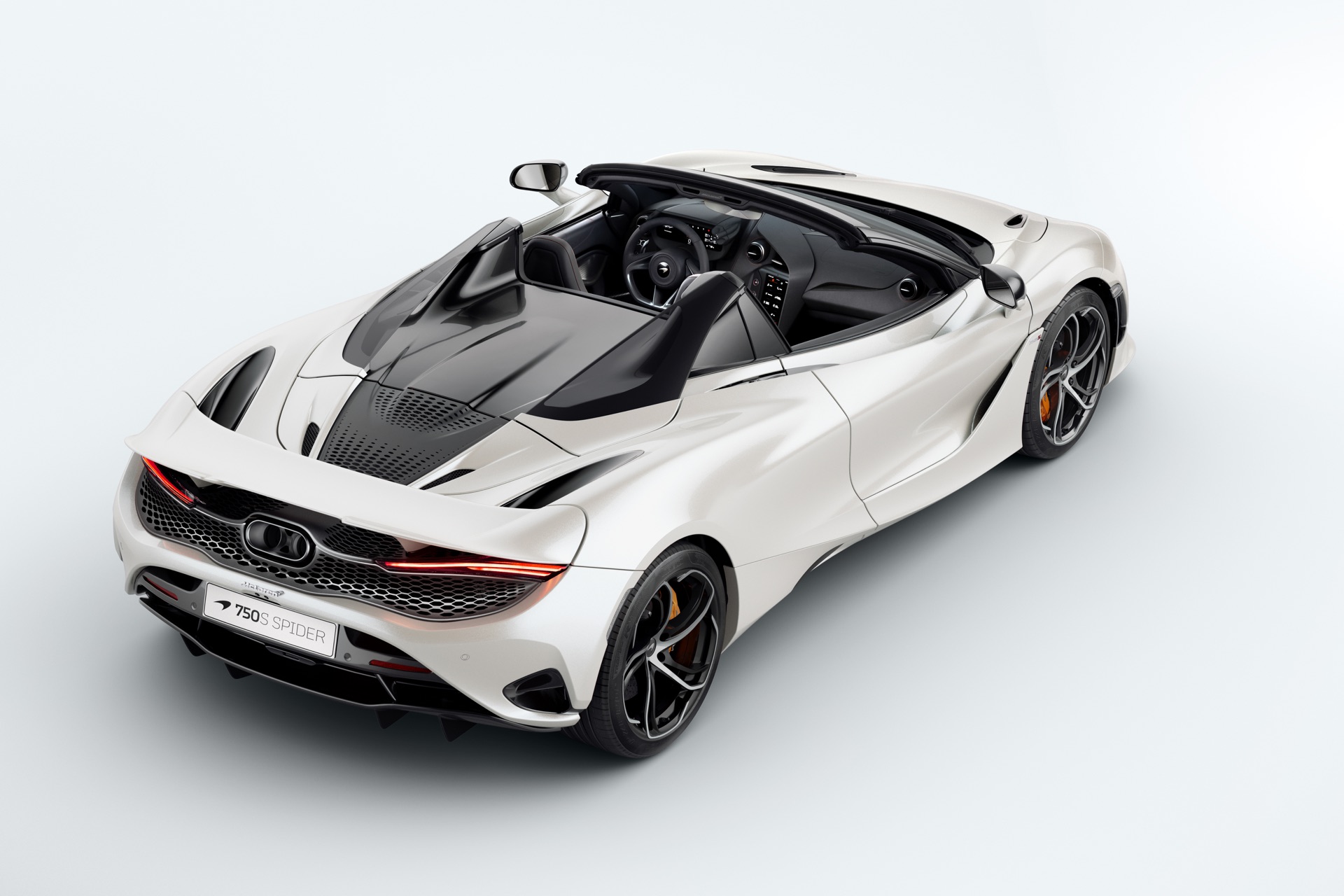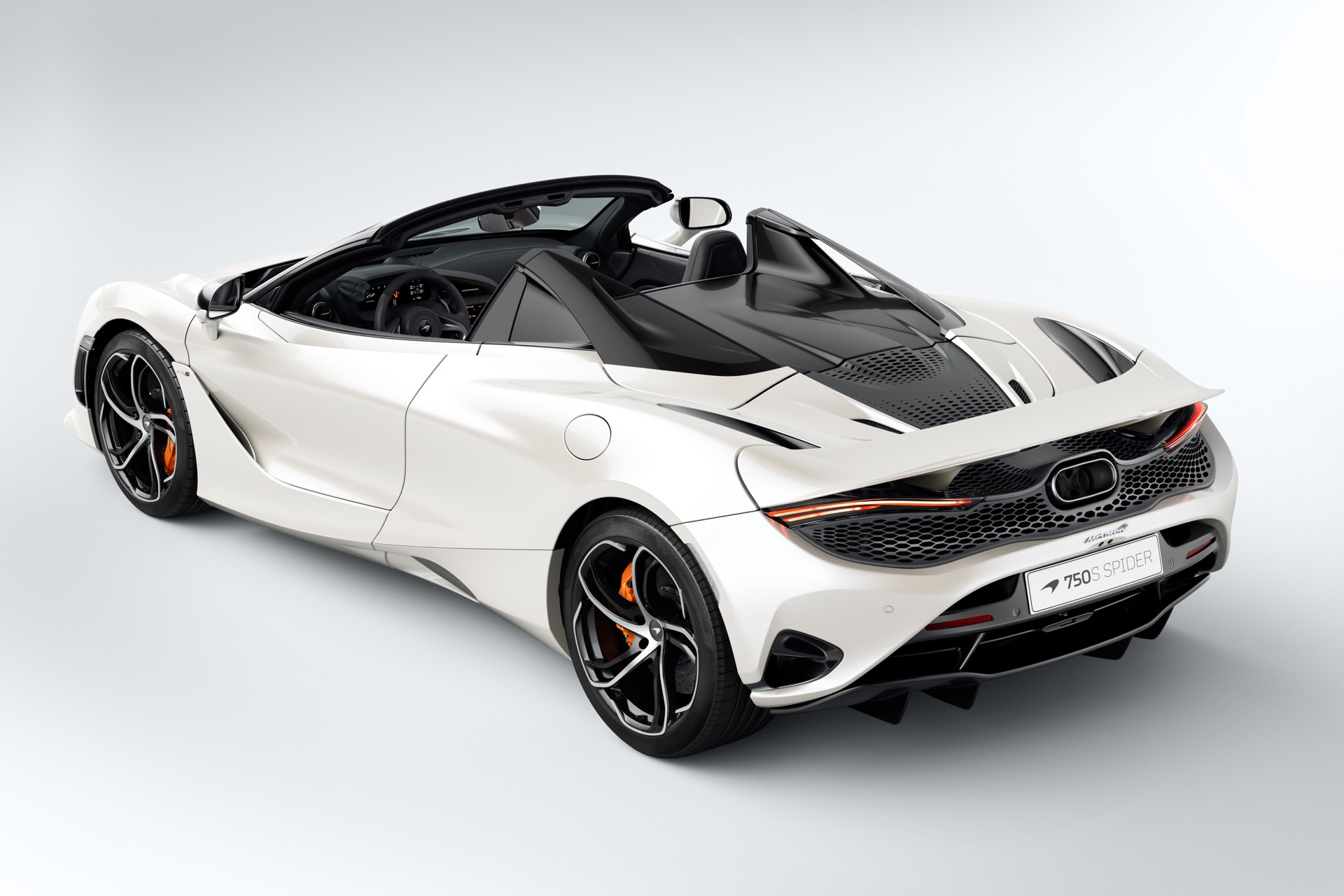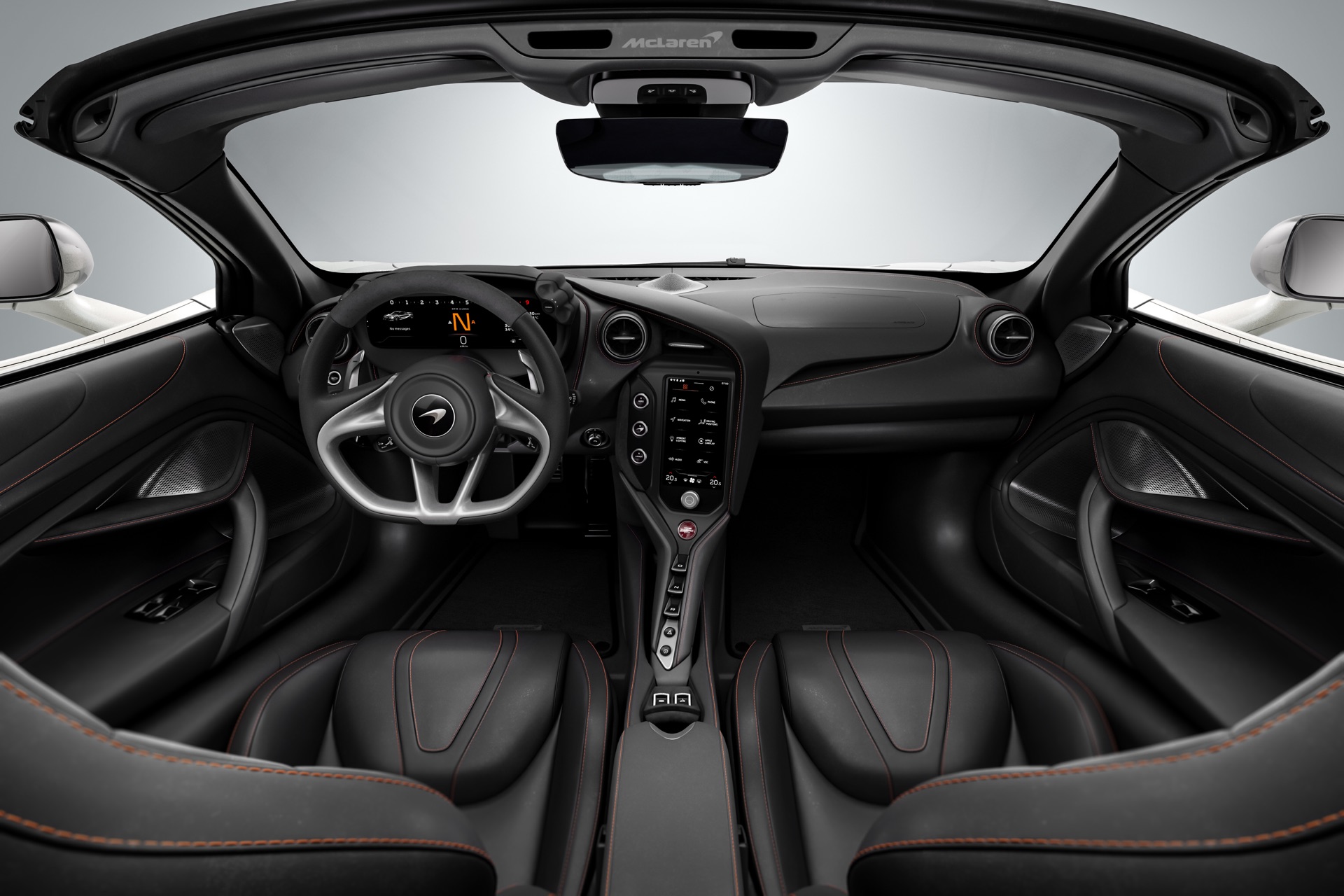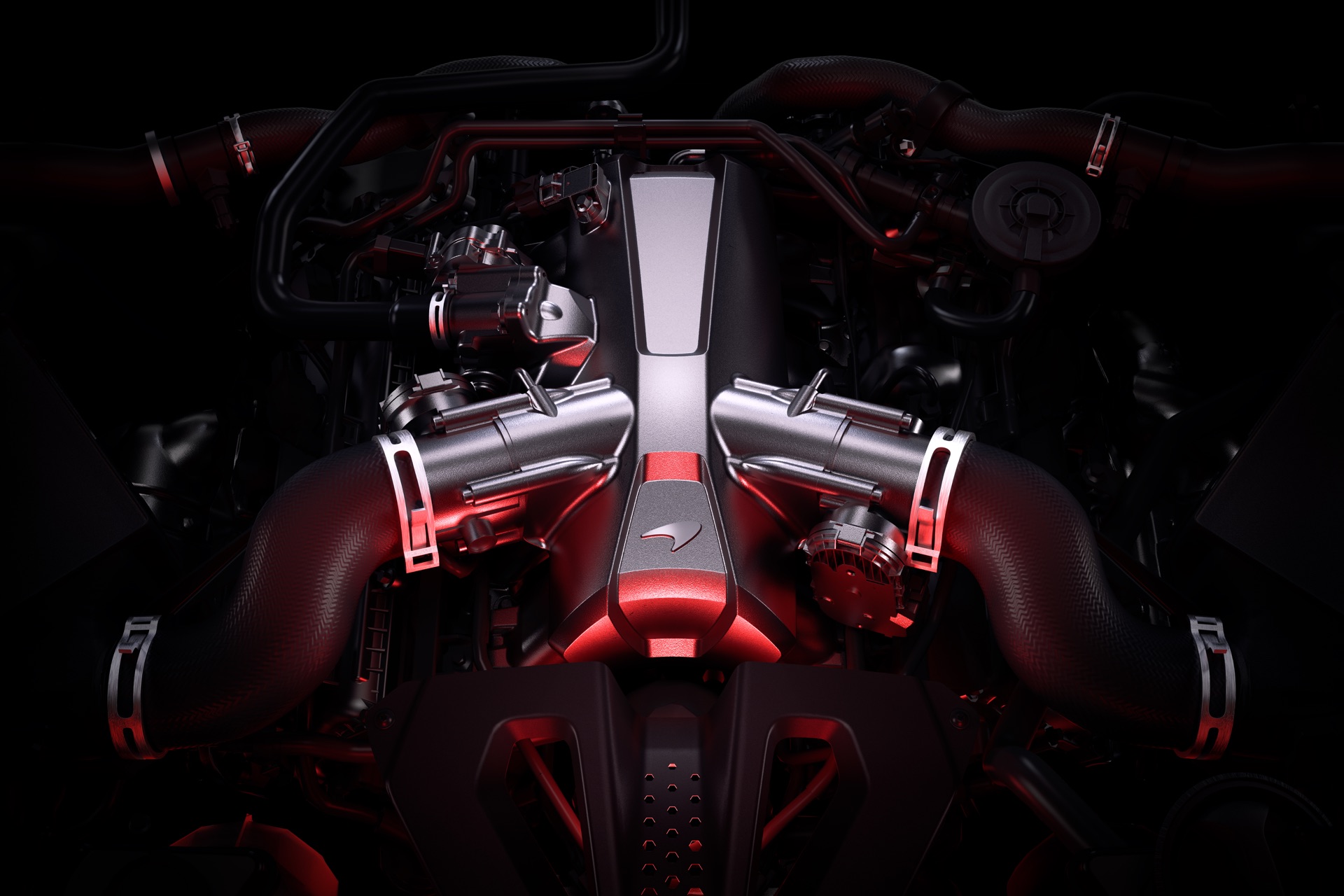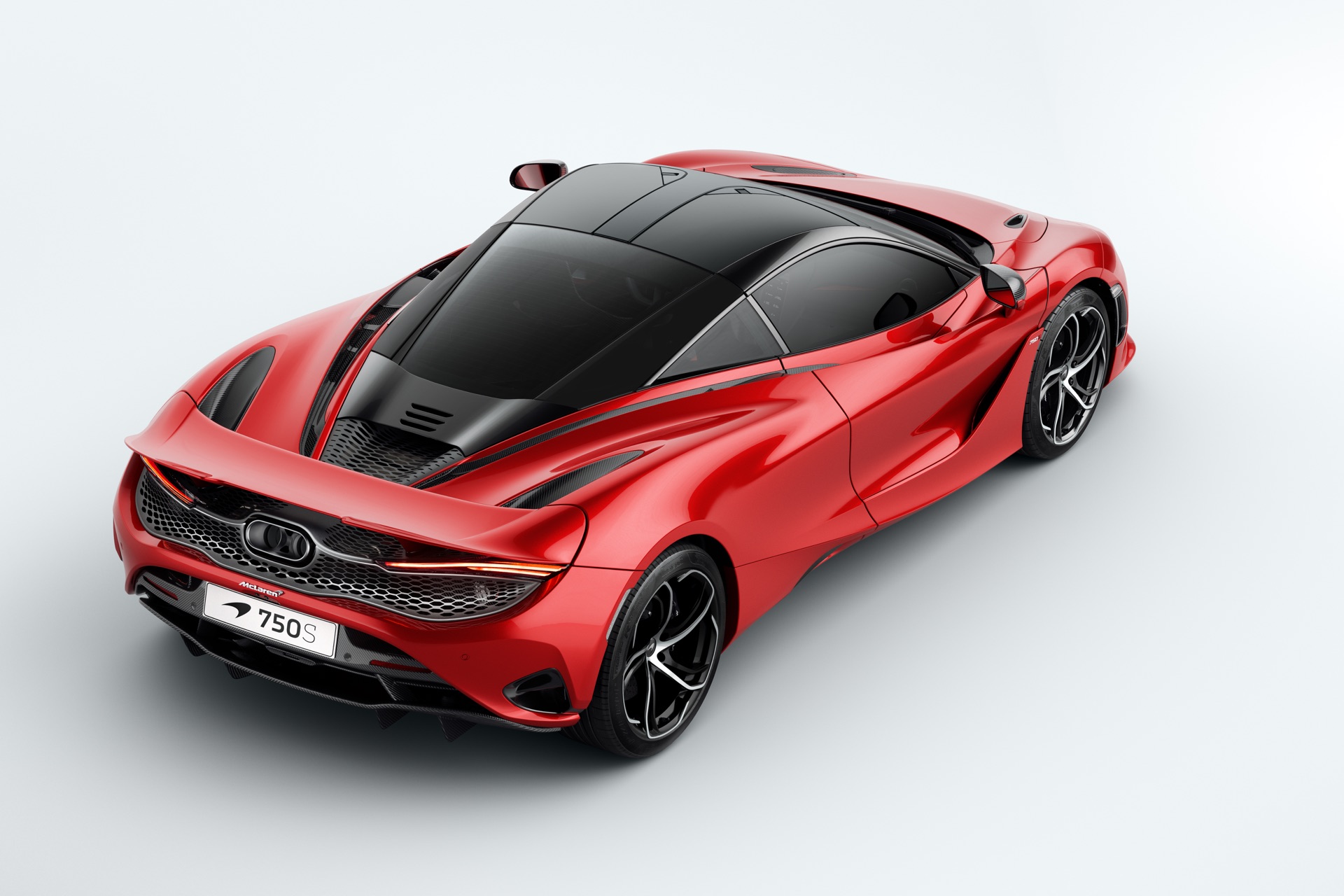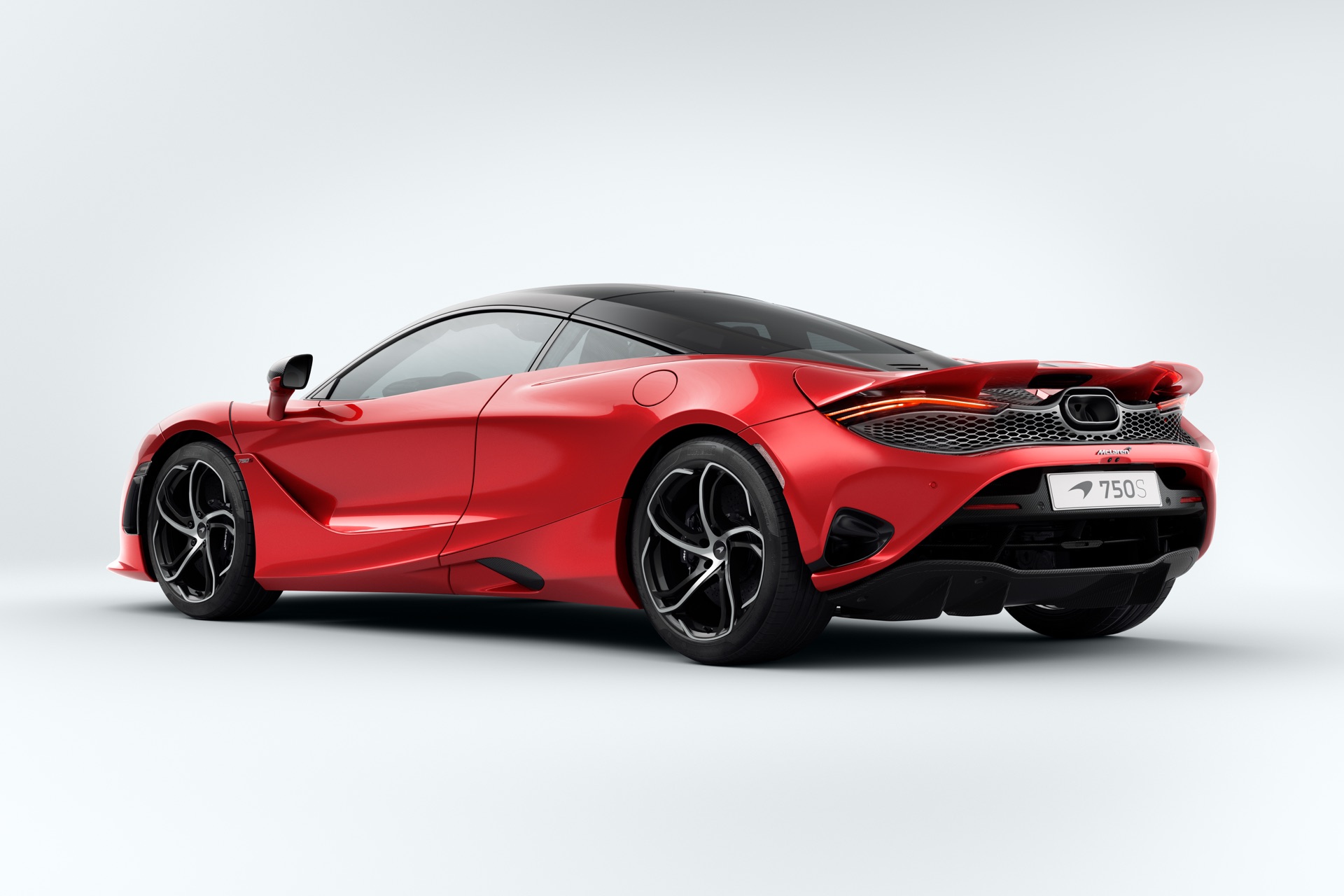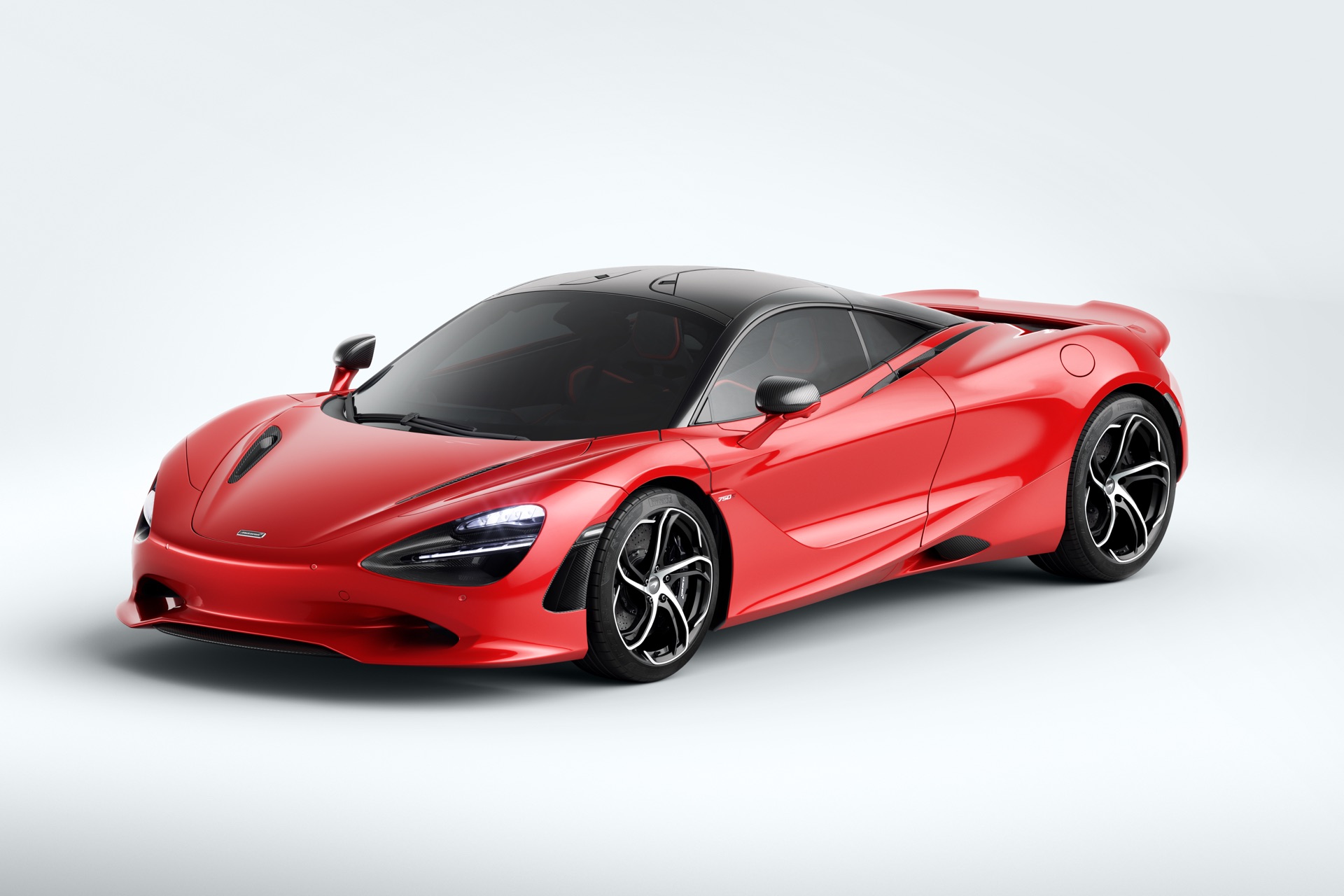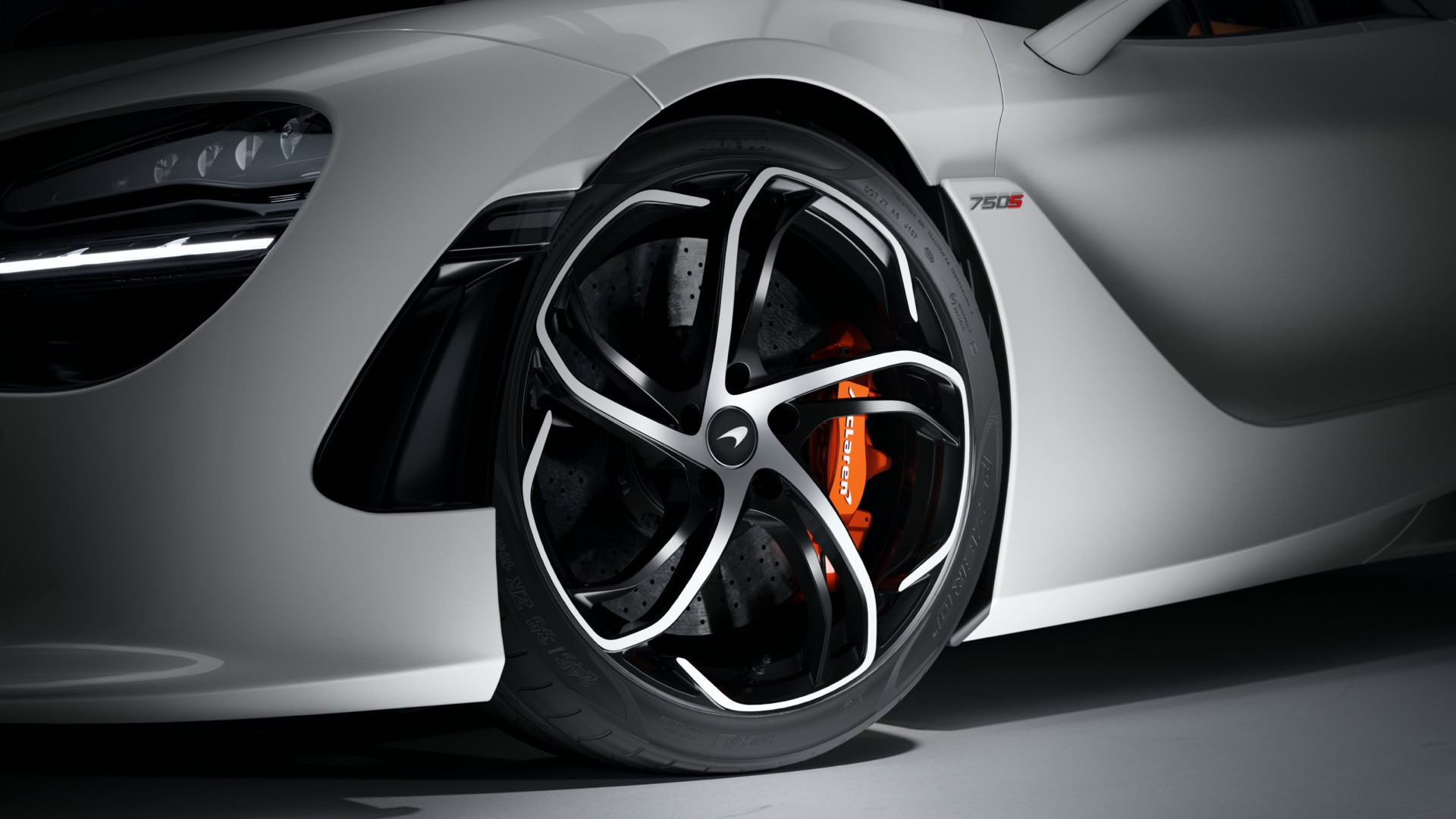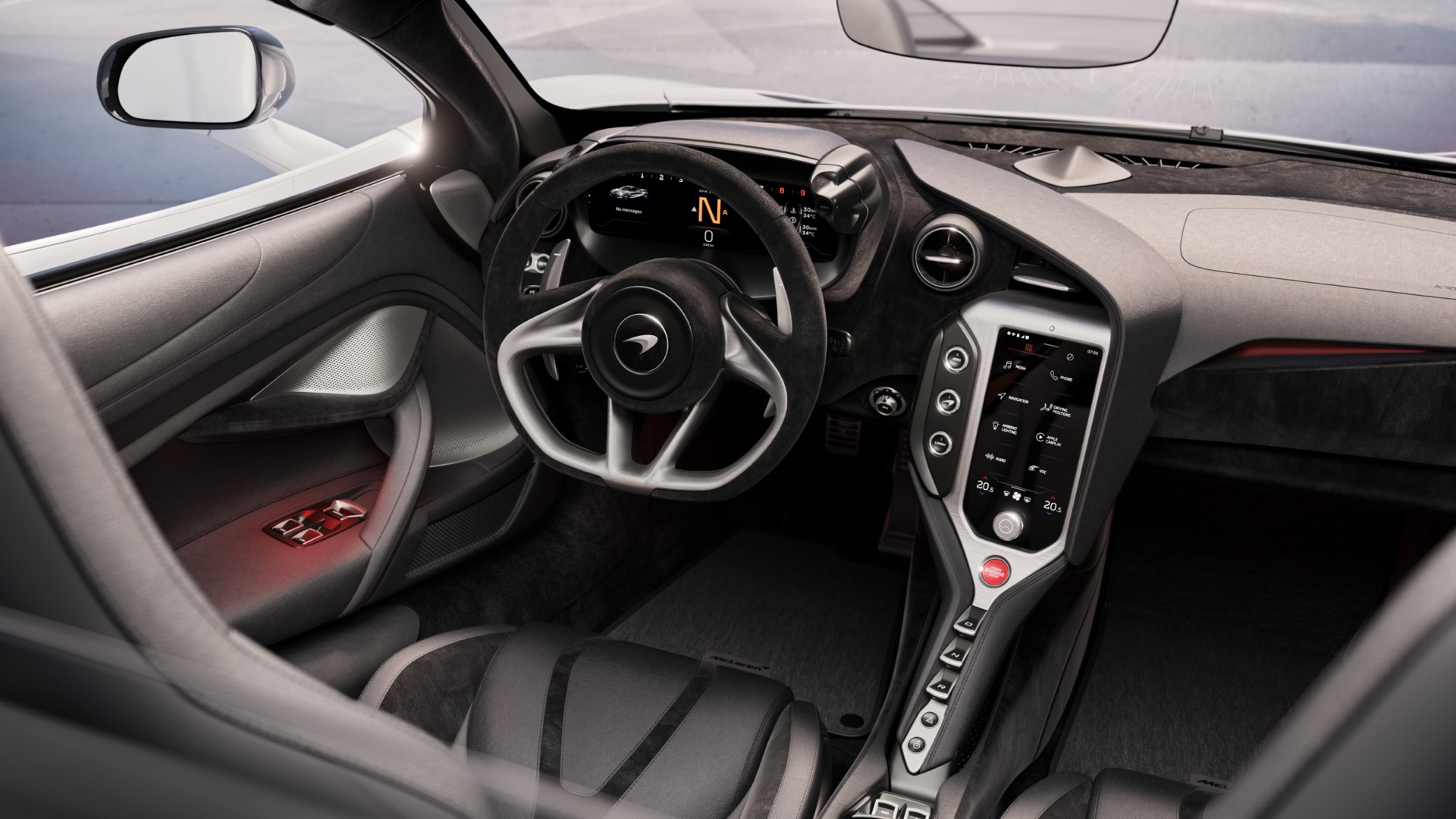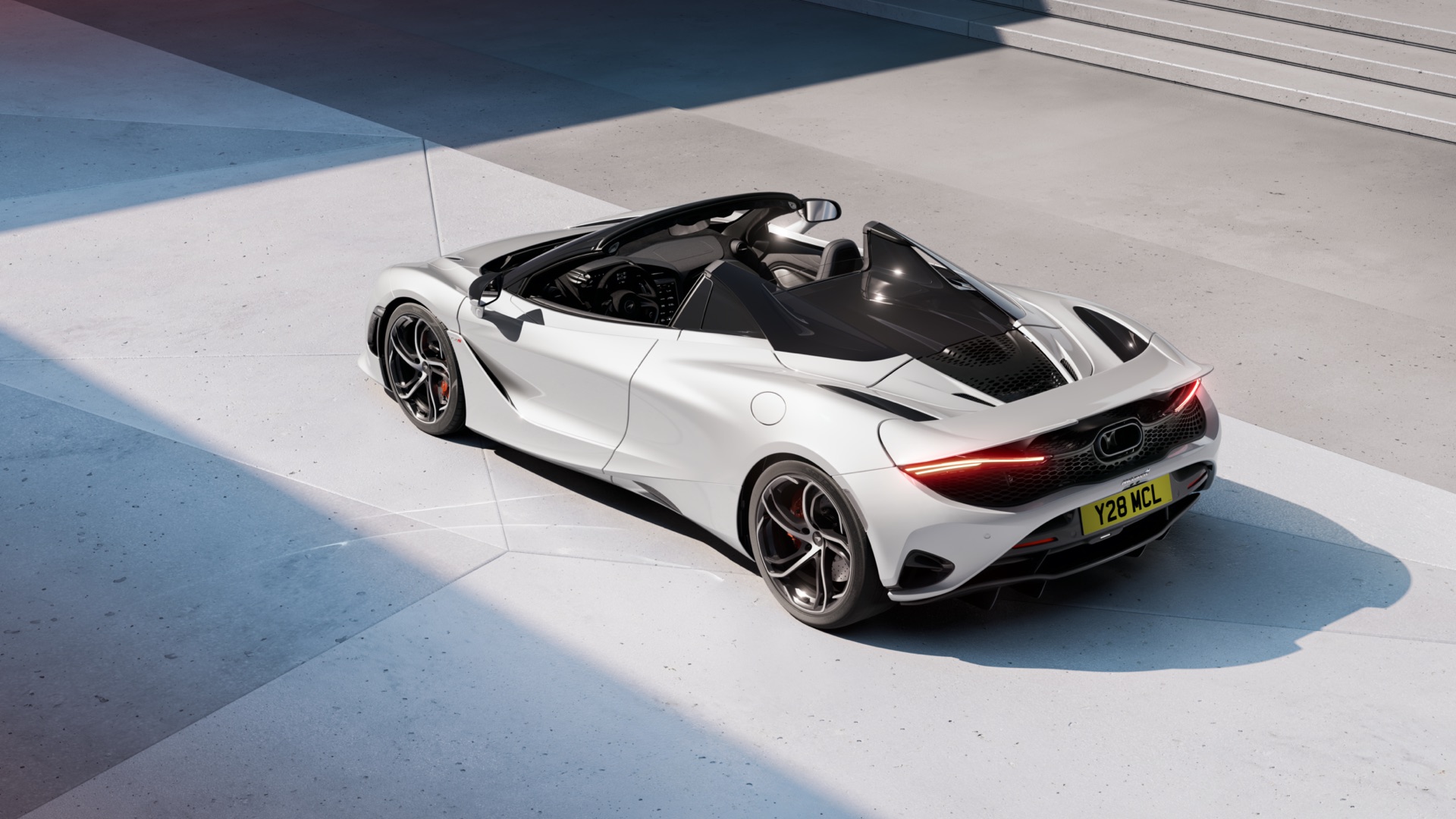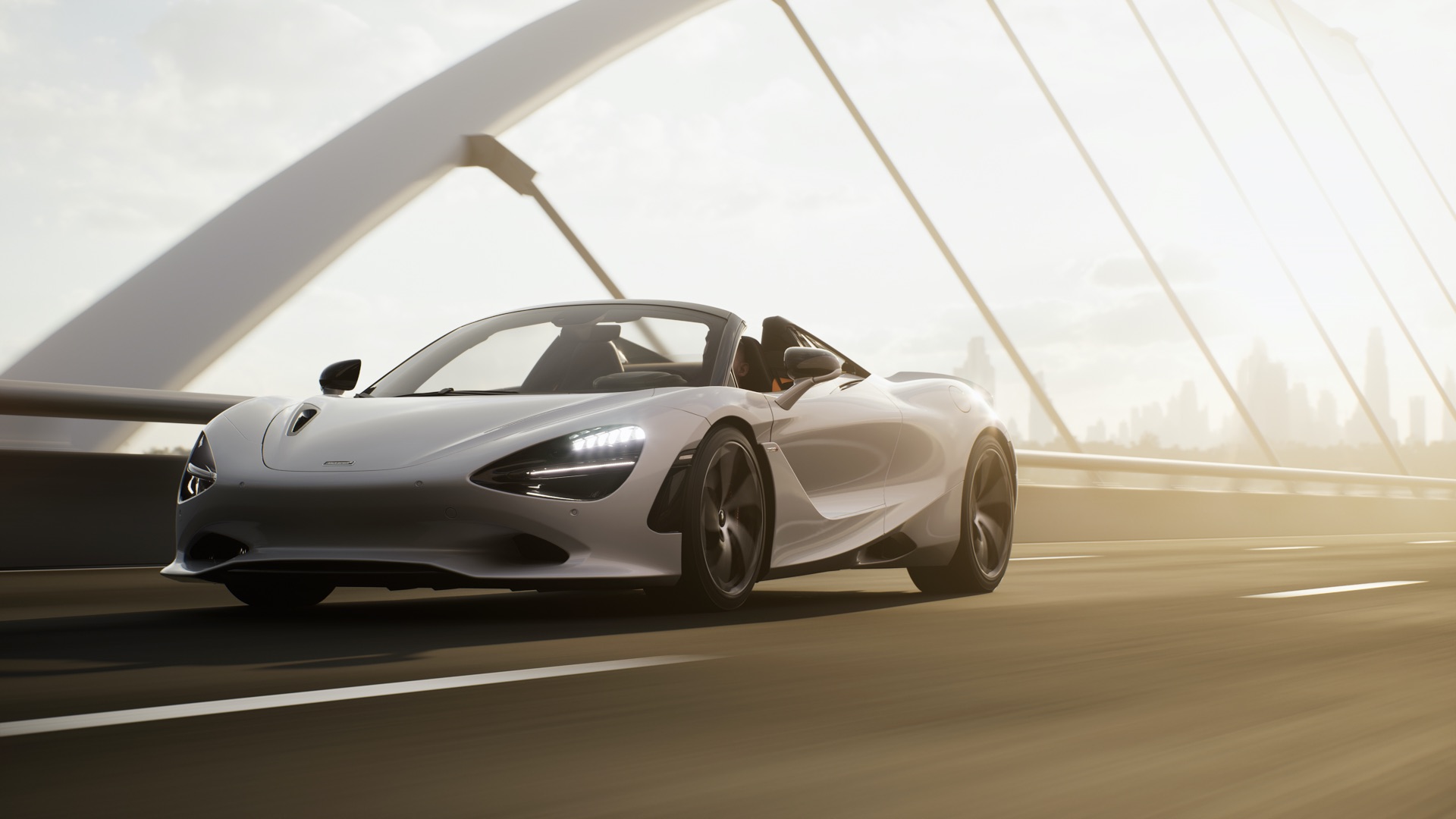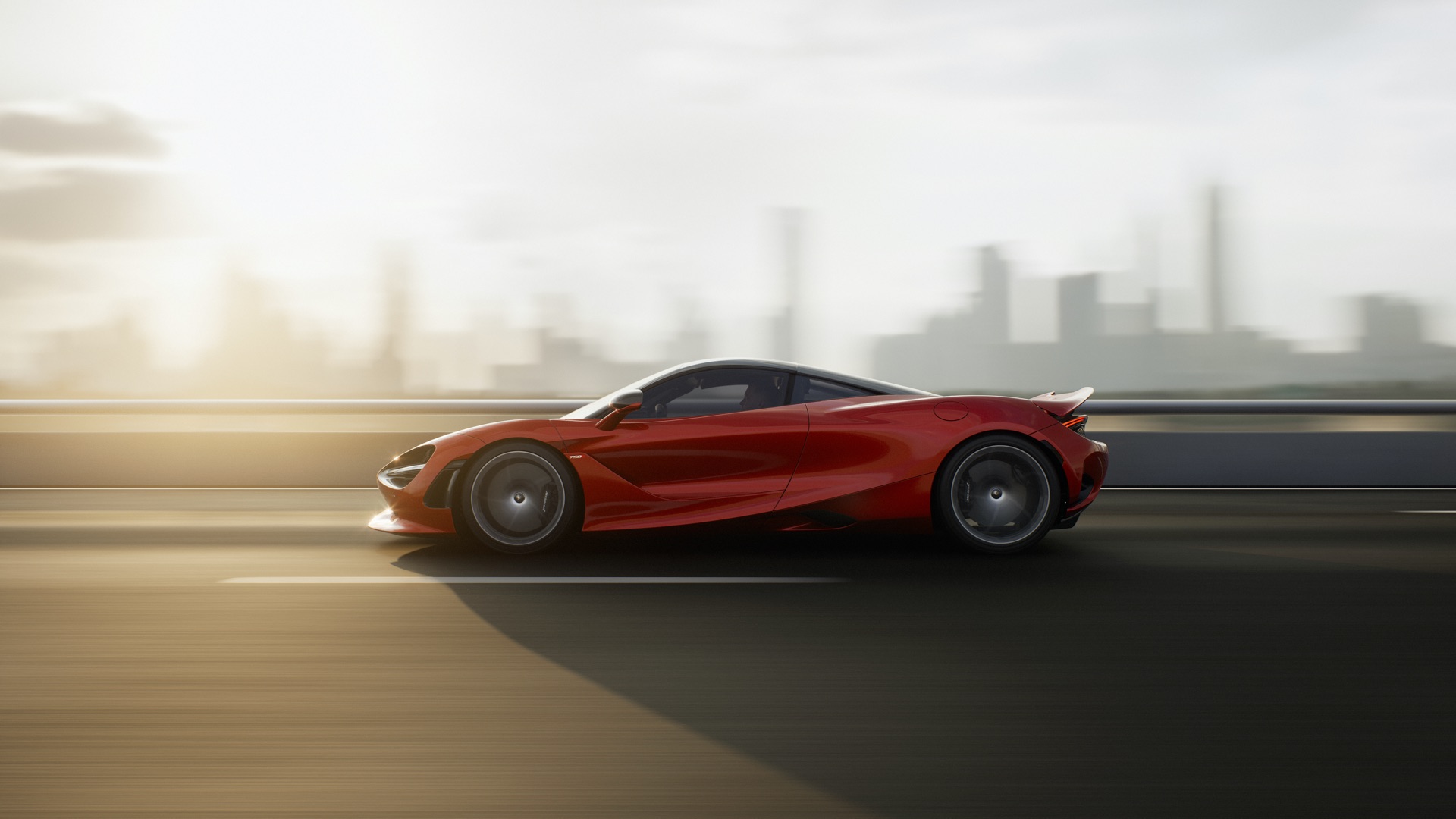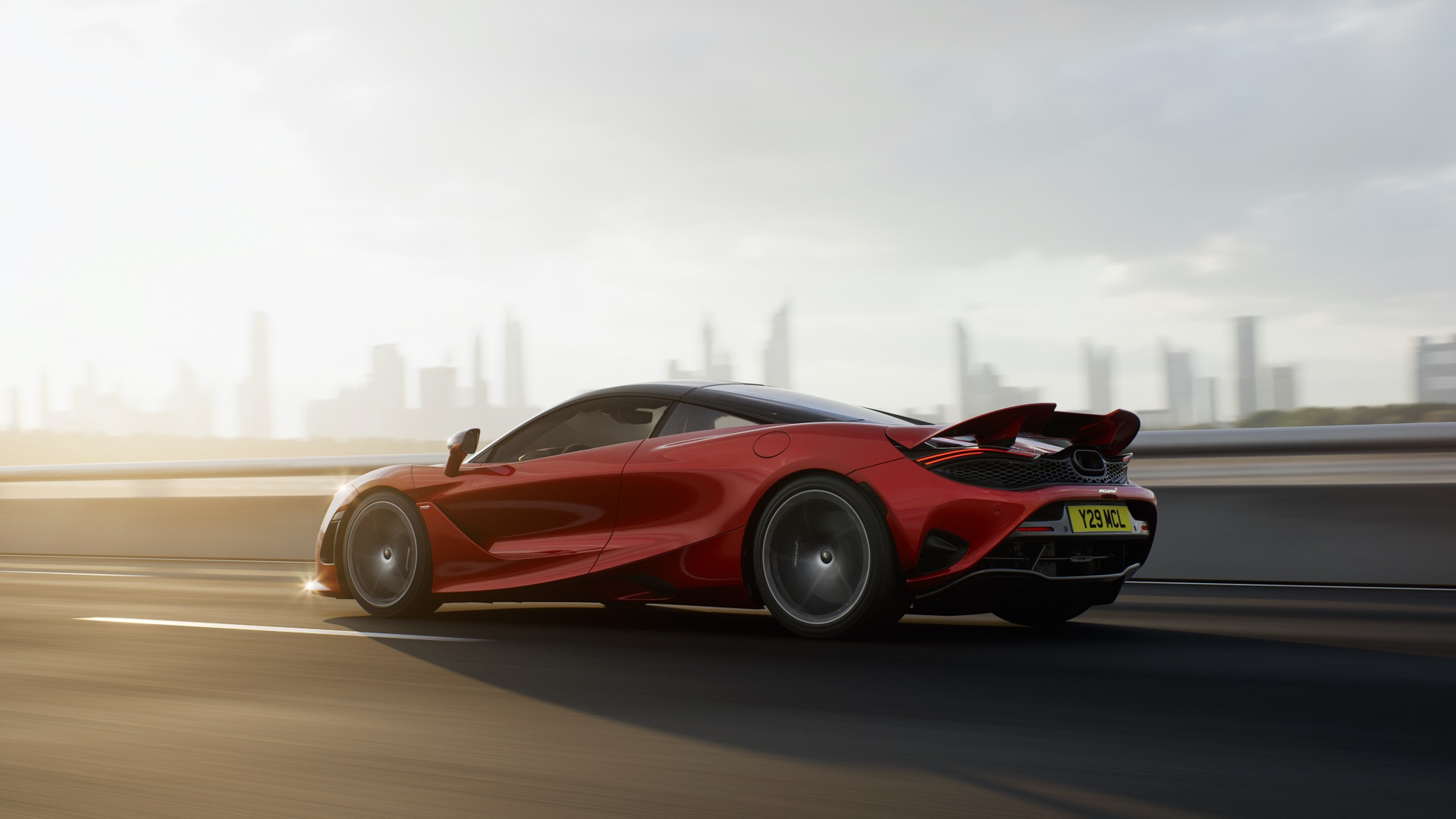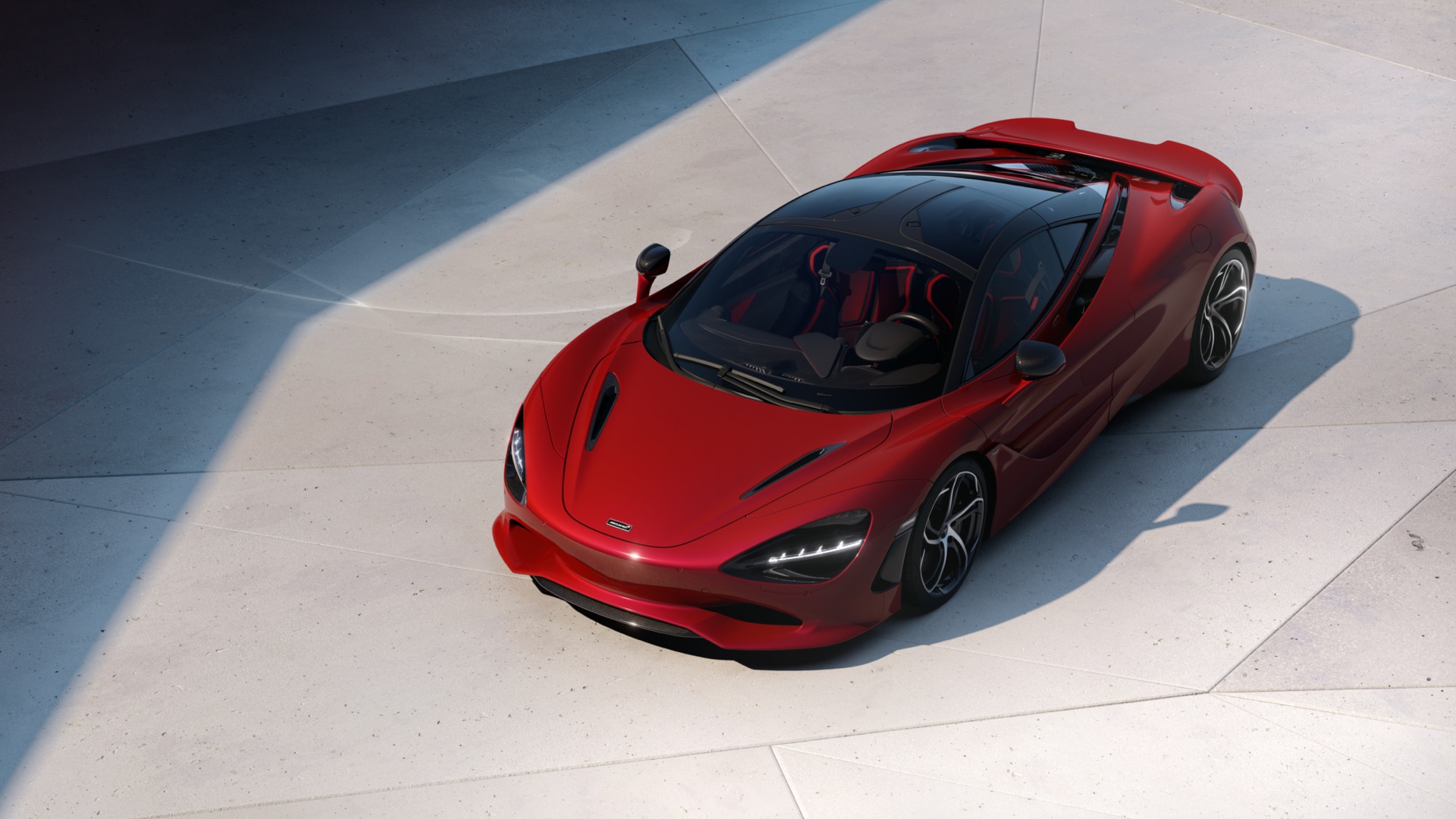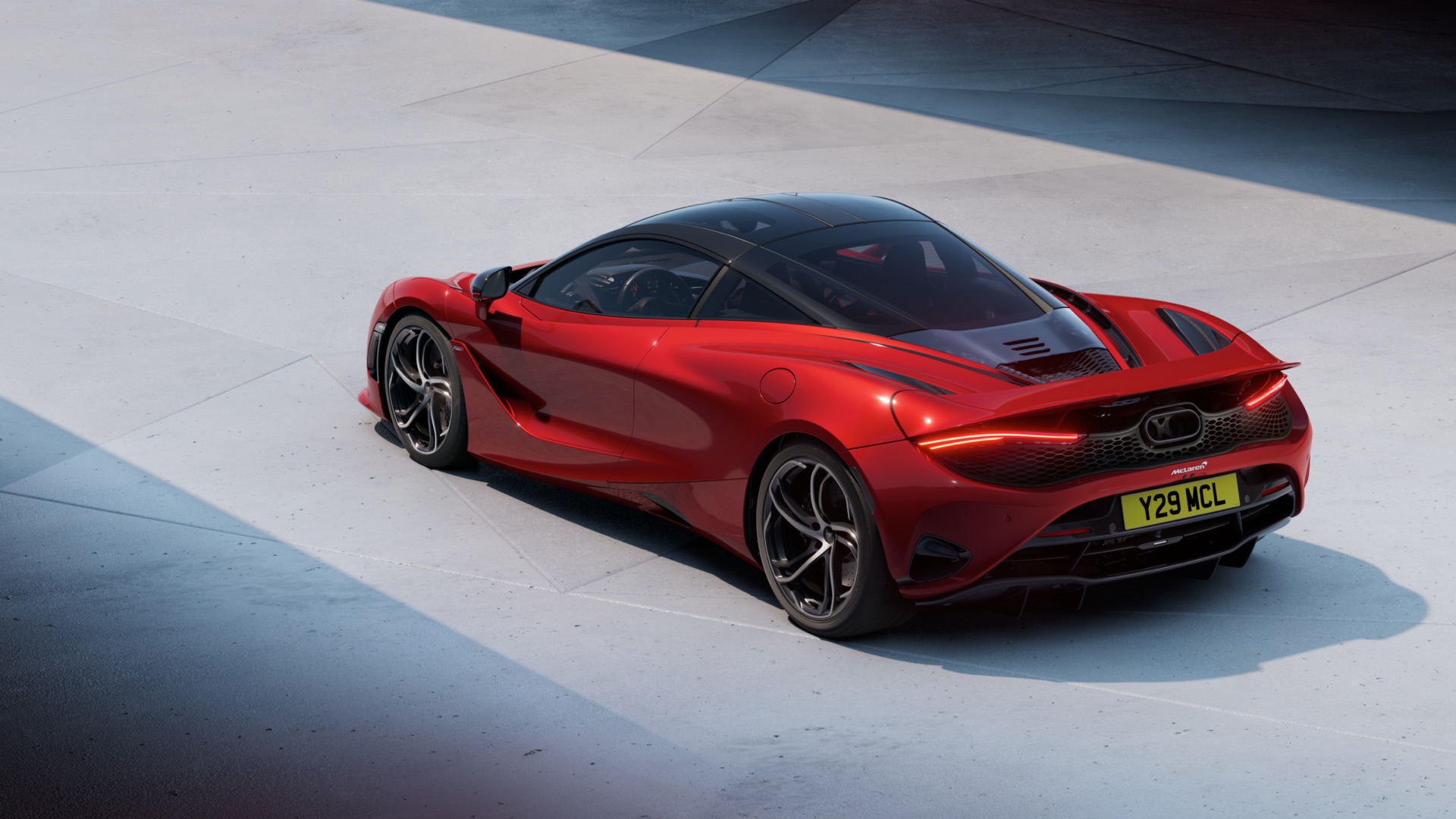We’ll forgive you for double taking and thinking we had uploaded images of a 720S, but this is the 2023 McLaren 750S and McLaren insists this takes the baton from the 720S as being the new benchmark in the supercar segment. GTspirit will have to wait to jump behind the wheel of the 750S to confirm that hypothesis, what we do know is that the 720S was a phenomenal package that continued to impress, even in the context of the fresh competition from Ferrari and Lamborghini. We sensed change was on the horizon when the Artura debuted with its bombastic hybrid powertrain and exceptional handling characteristics, surely the 720S replacement would be heading in the same direction? Not quite, the big news here is that there is no really big news, instead McLaren have enhanced the 750S to be even more potent, fun and alive than the outgoing 720S, after all, when a recipe is already so well received, why fire the head chef and change the menu? Factor in the uncertainty at a time when legislators are bickering over how to set a political agenda that will win votes whilst still making sense and is achievable, why rush to hybridise the entire range is there could be a future for the pure combustion engine?
“When you have a car recognised by so many drivers as a benchmark, to do something even better you have to examine every detail and really push hard for improvements that raise the bar again. This is what we have done with the new 750S and the light weight, V8 engine performance and outstanding dynamic abilities combine to deliver a supercar driving experience that hits new heights, with truly exhilarating levels of emotional connection.” – Michael Leiters, CEO, McLaren Automotive
Enough of why, what’s changed? It would be obtuse to say that the McLaren 750S is a 720S with new badges and figures, McLaren are keen to point out that the really exciting changes are under the skin. The new 750S is the lightest and most powerful series-production McLaren, with segment-leading power-to-weight ratio of 579 horsepower-per-tonne (coupe, at lightest dry weight) – a 22 horsepower advantage over what McLaren calls its closest competitor, the Ferrari 296 GTB.
Weighing in at just 1,389kg (DIN), the vehicle is 30kg lighter than the 720S, which is a testament to McLaren’s commitment to lightweight engineering. This performance-oriented approach to innovation is exemplified by the use of carbon fibre racing seats that are 17.5kg lighter than the standard seats in a 720S, as well as the introduction of new 10-spoke forged wheels that are the lightest ever featured on a McLaren series-production vehicle, saving 13.8kg. Additionally, the new driver instrument display is 1.8kg lighter, and even the windscreen glass contributes to weight reduction, providing a saving of 1.6kg.

Optional carbon fibre-shelled racing seats, first seen in the Senna, and the lightest wheels ever fitted as standard on a series-production McLaren among features that deliver weight-reduction. The penalty of opting for the Spider, which unusually has been unveiled alongside the Coupe, is just 49kg thanks to the Carbon fibre upper structure and composite Retractable Hard Top.
The unique McLaren M840T engine developed for the 750S sees the boost pressure of the ultra-low inertia, twin-scroll turbochargers increased, raising air pressure within the cylinders. In conjunction, an additional high-flow fuel pump meets the greater fuel flow pressure requirements. The 4.0-litre V8 remains and is remains free of any hybrid elements in the McLaren 750S. The 750S delivers a scintillating performance, producing 750PS of power and 800Nm of torque. The engine’s greater power and torque are matched by a transmission featuring a final drive ratio that is shorter, which leads to faster acceleration. As a result, the car can reach speeds of 0-200km/h (0-124mph) in just 7.2 seconds (compared to 7.3 seconds for the 750S Spider), which is faster than any other vehicle in its class. The transmission gearing has been optimised and the kickdown control strategy has been revised to enhance in-gear acceleration.
The latest iteration of McLaren’s Proactive Chassis Control hydraulic suspension system has been upgraded to PCC III and is even more impressive. McLaren report that the 750S’s exceptional dynamic abilities are largely due to this new-generation suspension system, which features softer front springs, stiffer rear springs, and a reconfigured valve stack with both passive and active elements. A new approach to tuning the suspension has been implemented, involving adjustments to the accumulators in the struts, resulting in improved ride comfort, roll control, steering feedback, and cornering balance. The suspension system’s weight has also been reduced by 2kg through new spring and damper designs. The combined hardware and software changes in PCC III have expanded the 750S’s dynamic capabilities beyond those of its predecessor, allowing it to maintain 720S levels of comfort while delivering significantly better circuit performance, making it McLaren’s new benchmark supercar.
In addition to its improved suspension system, the McLaren 750S is also more nimble than the car it replaces as the front-end grip has been improved. This is due to a wider front track that is 6mm wider and new suspension geometry. Furthermore, the car is equipped with McLaren’s electro-hydraulic steering, which is known for its precise feedback, and has been upgraded with a faster steering ratio and a new power-assistance pump, contributing to the car’s agility. In addition to its superior suspension system, the 750S is also more nimble than the car it replaces as the front-end grip has been improved. This is due to a wider front track that is 6mm wider and new suspension geometry. Furthermore, the car is equipped with McLaren’s electro-hydraulic steering, which is known for its precise feedback, and has been upgraded with a faster steering ratio and a new power-assistance pump, contributing to the car’s agility.

As with the Artura, the McLaren 750S boasts a fusion of up-to-date technology and better material and switchgear in the interior, with a particular emphasis on prioritising the driver’s needs. Central to this focus is the implementation of new displays for both informative and instrumental purposes, with the latter display mounted onto and moving with the steering column. Placed within a binnacle, this driver-oriented display also features controls on either side, facilitating seamless switching between Comfort, Sport, and Track Active Dynamic modes while keeping the driver’s hands on the wheel and attention fully on the road ahead.
By pressing the McLaren Speedmark button, known for its distinctive logo, drivers can activate the MCL feature, which enables them to customise their driving experience. This includes storing a unique combination of aero, handling, powertrain, and transmission settings that can be easily retrieved with a single press of the MCL button. These are welcome additions that give the 750S a fresh feel over the car that it replaces.
McLaren is well-known for its electro-hydraulically assisted steering system, which offers exceptional feedback and connectivity to drivers. With the 750S, this system has been fine-tuned to provide an even faster steering ratio and greater linearity, resulting in more precise and accurate driver inputs. Together with a new spring balance, revised damper valve definitions, and bump steer mitigation, the 750S is now even more agile and responsive, offering sharper turn-in and inspiring greater driver confidence.

McLaren insists that there is a heightened physical and emotional connection between driver and car is aided by bespoke engine mount tuning. The McLaren 750S features a new central-exit exhaust layout inspired by the McLaren P1 that is acoustically tuned to give ‘a distinctive clear tone and sharp crescendo at high engine speeds.’
For those 750S customers who intend to undertake intensive circuit driving, there is the option of upgrading to a track brake system. This system incorporates ceramic discs and monobloc calipers that are based on the ones used in the McLaren Senna. Additionally, the brake booster and vacuum pump have been upgraded, and Formula 1-inspired caliper cooling technology has been integrated. To further enhance the vehicle’s track capabilities, Super-Lightweight Carbon Fibre Racing Seats can also be selected as an optional feature, as can the track-focused Pirelli P ZERO Trofeo R tires and lightweight titanium wheel bolts, for added lightweight nerdiness.
The most significant changes in appearance can be observed at the rear of the vehicle, where a curving mesh cover now spans the reworked rear deck, directing airflow towards a longer rear wing which bears a clear resemblance of the wing of the 765LT. Positioned above a new centrally located exhaust outlet designed for improved efficiency and more distinct sound effects, the surface area of this new wing is 20 percent larger than that of the 720S, yet it weighs 1.6kg less due to its carbon fibre construction. The wing can be deployed in three ways: by selecting the ‘aero’ button, the downforce in corners will increase in proportion to the car’s speed, while a DRS function is available for high-speed runs where minimal drag is required. Finally, during high-speed braking manoeuvres, the wing will pop up in under half a second to maximise stopping power.

The McLaren 750S features a refined front-end design in comparison to its predecessor. This includes a new lower nose section with an extended front splitter and narrower ‘eye socket’ intakes that now enclose the headlights. Optional features include body-coloured or carbon fibre headlight surrounds, as well as rear and front bumper vents made from McLaren’s signature lightweight material.
Coupe or Spider, it remains clear that McLaren found a sweet spot with the 720S and has elevated it in all areas with the 750S. The interior and tech changes, including Apple CarPlay, add to the appeal of the new model as do the enhanced performance and handling improvements. We will have to wait to experience the changes for ourselves, but we can be sure that this will be a very different supercar to it rivals such as the Ferrari 296 which are looking to hybrid technologies. We know McLaren can also do it, as seen with the Artura, but the Woking based brand makes no secret of its love of the experience that comes with the combustion engine.



